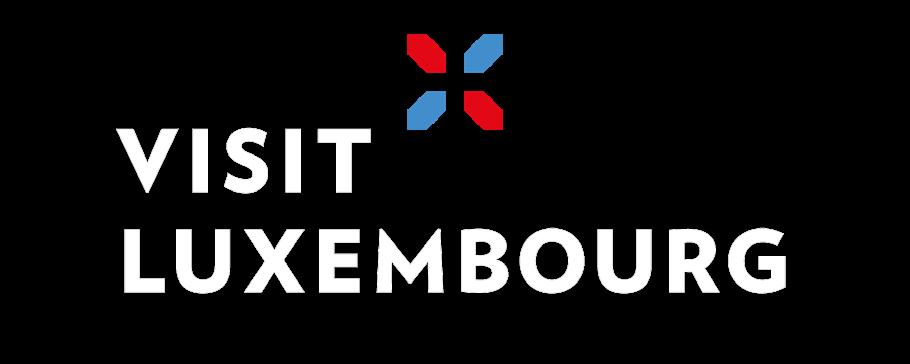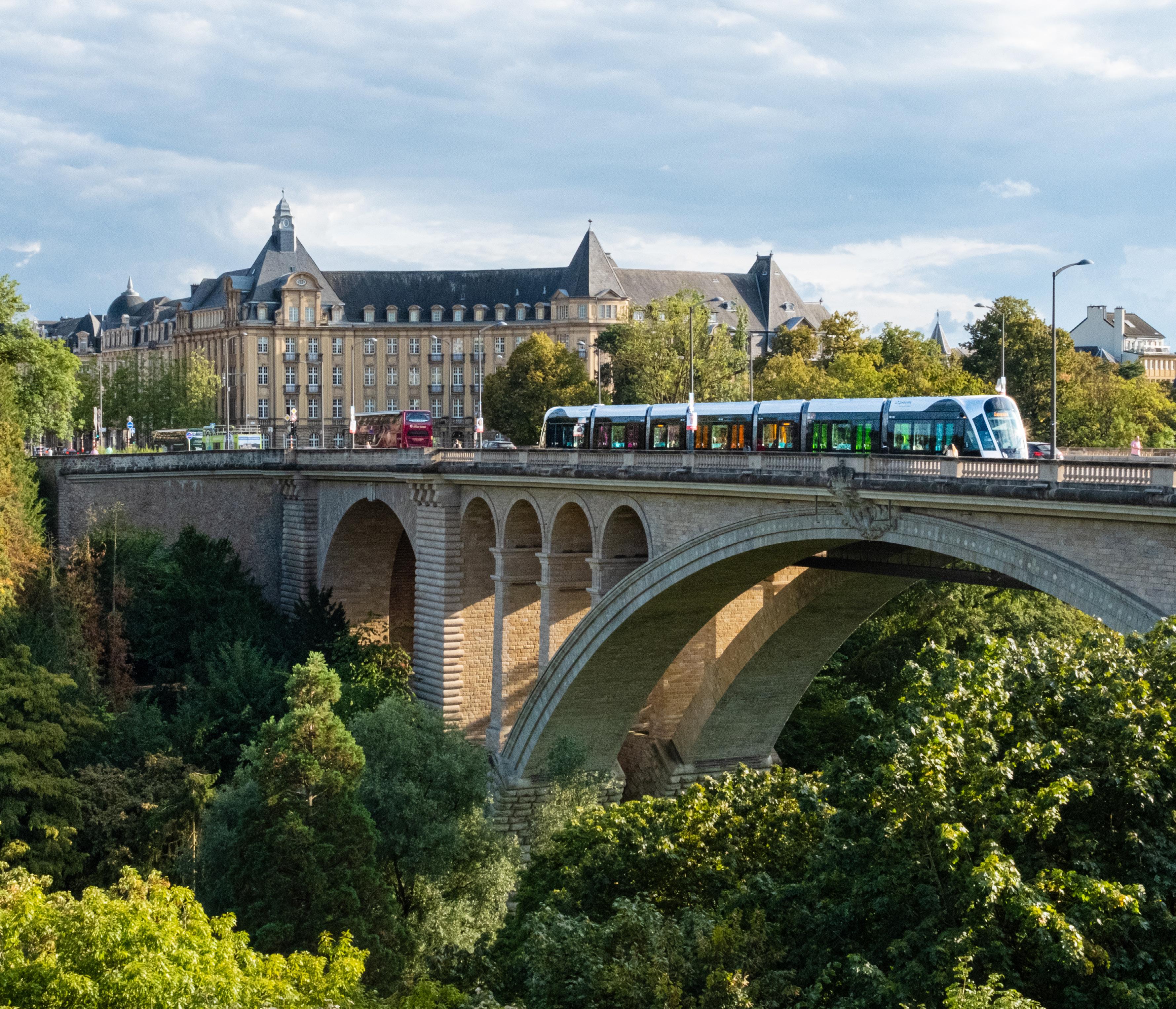

LUXEMBOURG



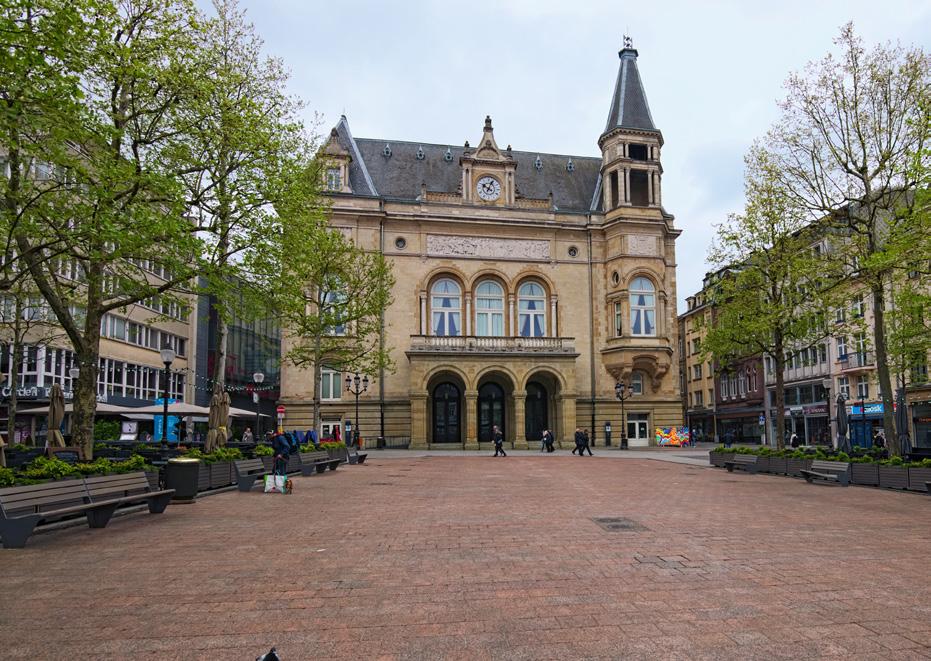
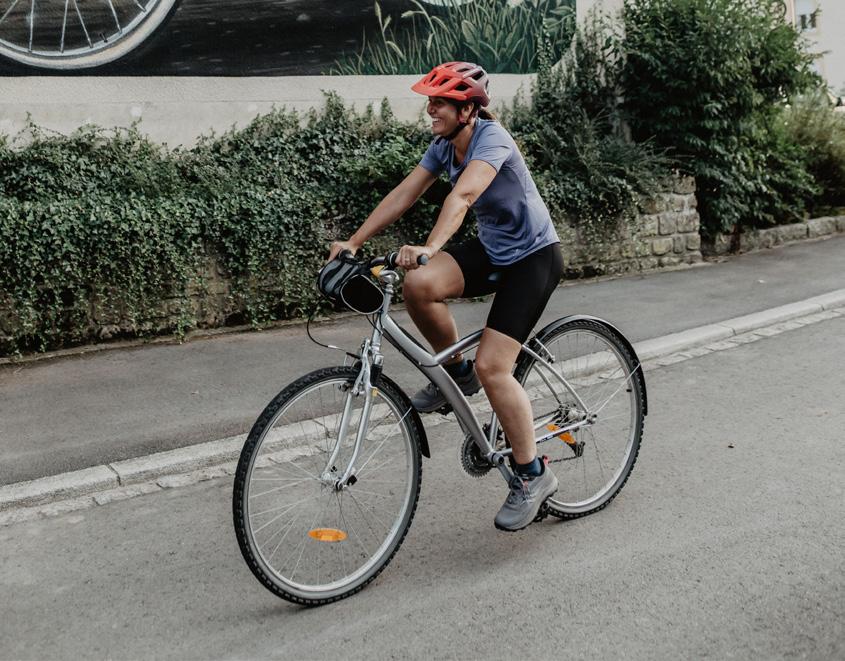
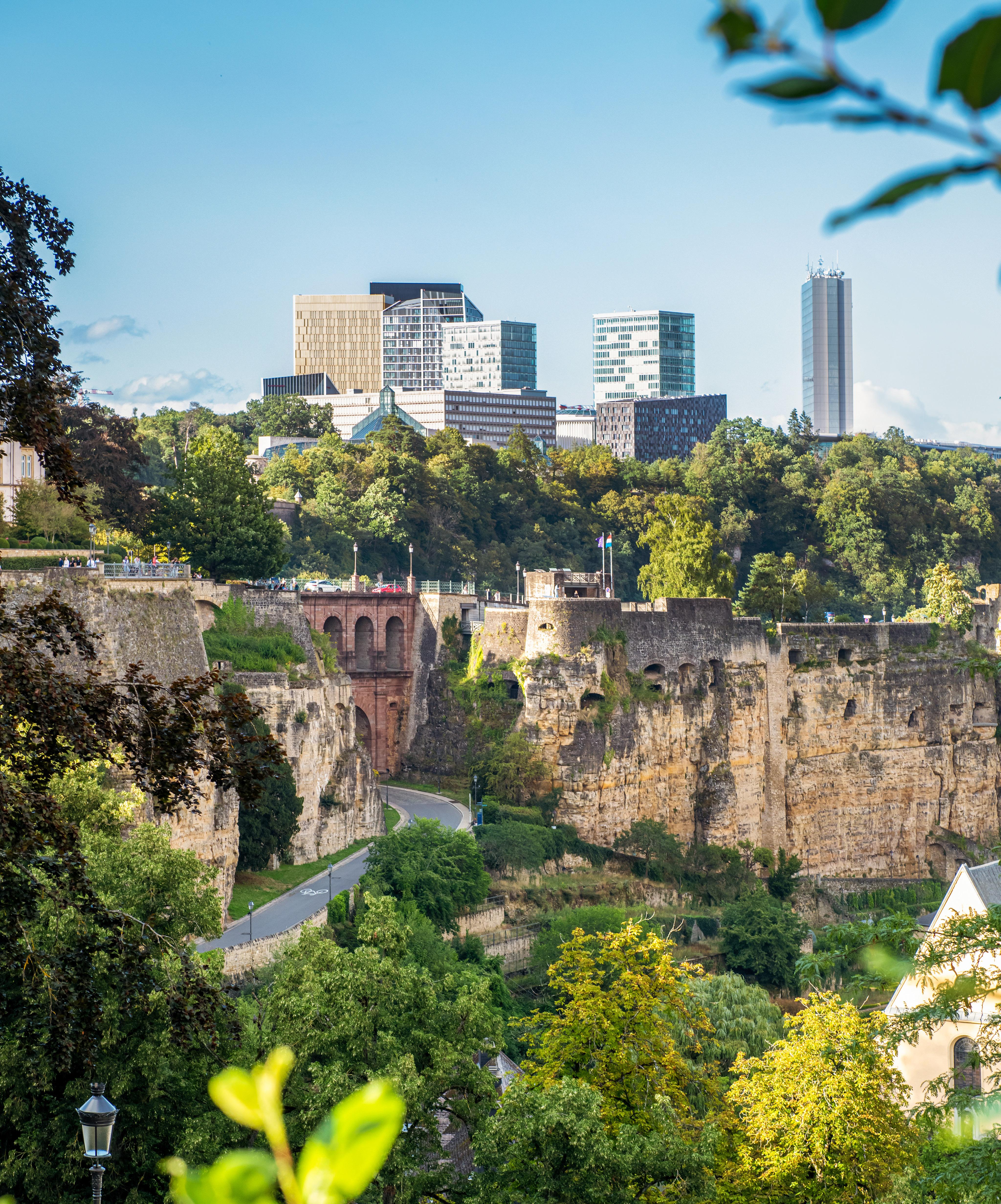
Luxembourg is a colourful country with recognisable influences from Europe and all over the world. Yet, the nation has its own distinctive culture and character.
Many visitors begin their stay in the vibrant capital, Luxembourg City, where world-famous artists rub shoulders with newcomers and old fortress walls meet modern architecture.
History buffs will not want to miss the bastions and casemates of the capital’s fortifications, a reminder of the period between the 16th and 19th centuries when Luxembourg was a fortress and regarded as the ‘Gibraltar of the North’.
Elsewhere, away from the capital, there are five other unique regions in the country that await discovery.
LUXEMBOURG
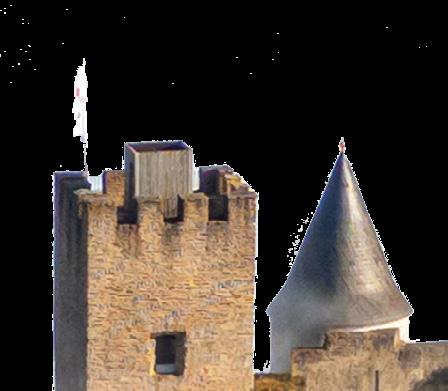

Luxembourg City is almost entirely surrounded by Guttland, the garden of the capital city, which welcomes visitors with lush countryside and the characteristic Valley of the Seven Castles.
To the north, Éislek captivates with its rugged natural beauty, panoramic views, and famous castles, whilst Mullerthal – also known as ‘Luxembourg’s Little Switzerland’ – is home to magical and mythical rock formations and dense forests, a paradise for fans of outdoor leisure.
In Moselle, visitors to the east of the country have the opportunity to enjoy fine local wines and specialities in picturesque towns and villages amid the vineyards, with the wine village of Schengen standing as a synonym for modern Europe.
LUXEMBOURG
Medieval charm meets contemporary chic in Luxembourg, a small multicultural country in the heart of Europe with a unique blend of historic fortresses, lush landscapes, and cosmopolitan elegance all found in close proximity and ready to be explored
WRITER: JACK SALTER
PROJECT MANAGER: MANTE KALINAUSKAITE

Minett, or the ‘Land of the Red Rocks’, fascinates visitors and catches the eye with glowing red iron ore that dominates the natural landscape.
Travel to these regions is free-of-charge on Luxembourg’s nationwide public transport, becoming the first country in the world to abolish fares for trains, trams, and buses.
With one of the densest networks of hiking trails in Europe, Luxembourg is the ideal travel destination for hikers. Routes such as the 112-kilometre (km) Mullerthal Trail are packed with challenges and lead through a wonderful variety of sometimes wild and unspoilt landscapes.
Éislek, meanwhile, is the continent’s first certified quality hiking region, having been awarded the ‘Leading Quality
Region – Best of Europe’ certification by the European Ramblers Association, offering over 200 circular hiking trails through forests, past castles, over high plateaus, and between rocks.
Foodies likewise love exploring Luxembourg’s highquality cuisine. From iconic Moselle still and sparkling wines to Mullerthal cheeses and cider, the country’s chefs and craftspeople are experts in the culinary arts and serve passion with every product and dish.
Despite being a small country spanning an area of just 2,600 square kilometres (sqkm), the Grand Duchy boasts a delightful capital, five distinct regions with diverse landscapes, a rich cultural scene, plenty of history, and a paradise for food enthusiasts.
Bourscheid Castle
PHOTOGRAPHY: ANDRÉ SCHÖSSER
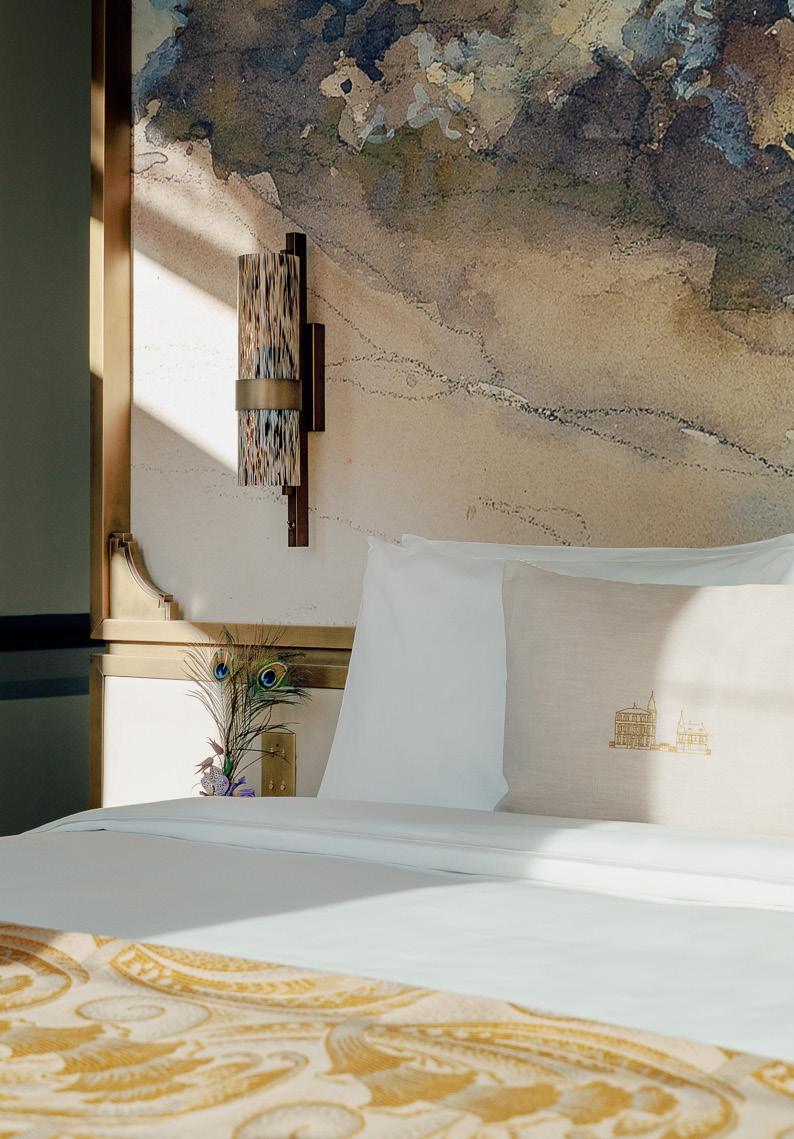
Today, Villa Pétrusse offers an unexpected oasis of nature in the heart of Luxembourg’s Ville Haute – an utterly unique privilege for its guests.
Designed as an intimate private home, the Relais & Châteaux-affiliated hotel occupies the Villa itself, the Pavillon in the former stables, and the inner courtyard overlooking the park and the Adolphe Bridge. Just a few steps away lie the boutiques of the historic city center.
In its 22 rooms, suites and penthouse, as well as in the reception spaces and restaurant, the warm elegance of a private home is everywhere. After five years of ambitious restoration, Villa Pétrusse has been reborn, with utmost respect for its remarkable architectural and artistic heritage.
Interior designer Tristan Auer drew inspiration from the spirit of the original house, restoring many historic elements. Among them: hand-painted wallpapers featuring reproductions of Sosthène Weis , whose poetic watercolors feel strikingly modern today.
An iconic RESIDENCE RESTORED TO ITS Former Glow


Now open to the city, Villa Pétrusse welcomes residents and visitors alike:
Le Lys – the fine dining restaurant unfolds across unique spaces, offering bespoke gastronomic experiences at any time of day. Led by Luxembourg-born chef Kim de Dood, with Michelin-starred experience worldwide, his ambition is clear: “to make Le Lys the best restaurant in the country.”
Brasserie Ciel – convivial and bright, with sweeping garden views.
““I love revisiting traditional dishes of my native Luxembourg with Asian influences, which have now become part of my cultural identity. My dreamis for this place to embody a modern vision of gastronomy, not at all stiff, where we can connect with our guests, creating a true relationship around taste.”
“THE
rebirthOF VILLA
PÉTRUSSE
IS PART OF A LONG-TERM MISSION TO preserveLuxembourg’sheritage AND PASS IT ON TO FUTURE GENERATIONS – A jewelNOW OPEN FOR BOTH LOCALS AND VISITORS FROM aroundtheworld.”
A symbol of the fortified past, the Casemates of the Pétrusse – carved into the rock in the 17 th century and listed as UNESCO World Heritage – lie only steps away. Once abandoned for years, the Villa now finds its natural place in this historic setting, where heritage and art de vivre meet.
From the very first glimpse, the emotion takes hold as you pass through the restored Neo-Romanesque gates into an atmosphere shifting between grandeur and intimacy.
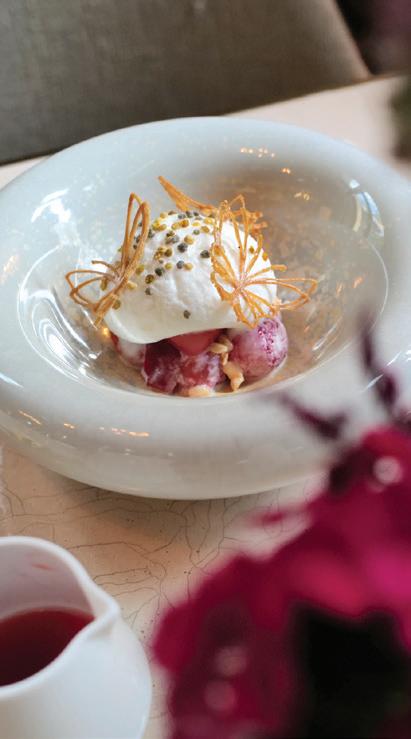
KIM DE DOOD

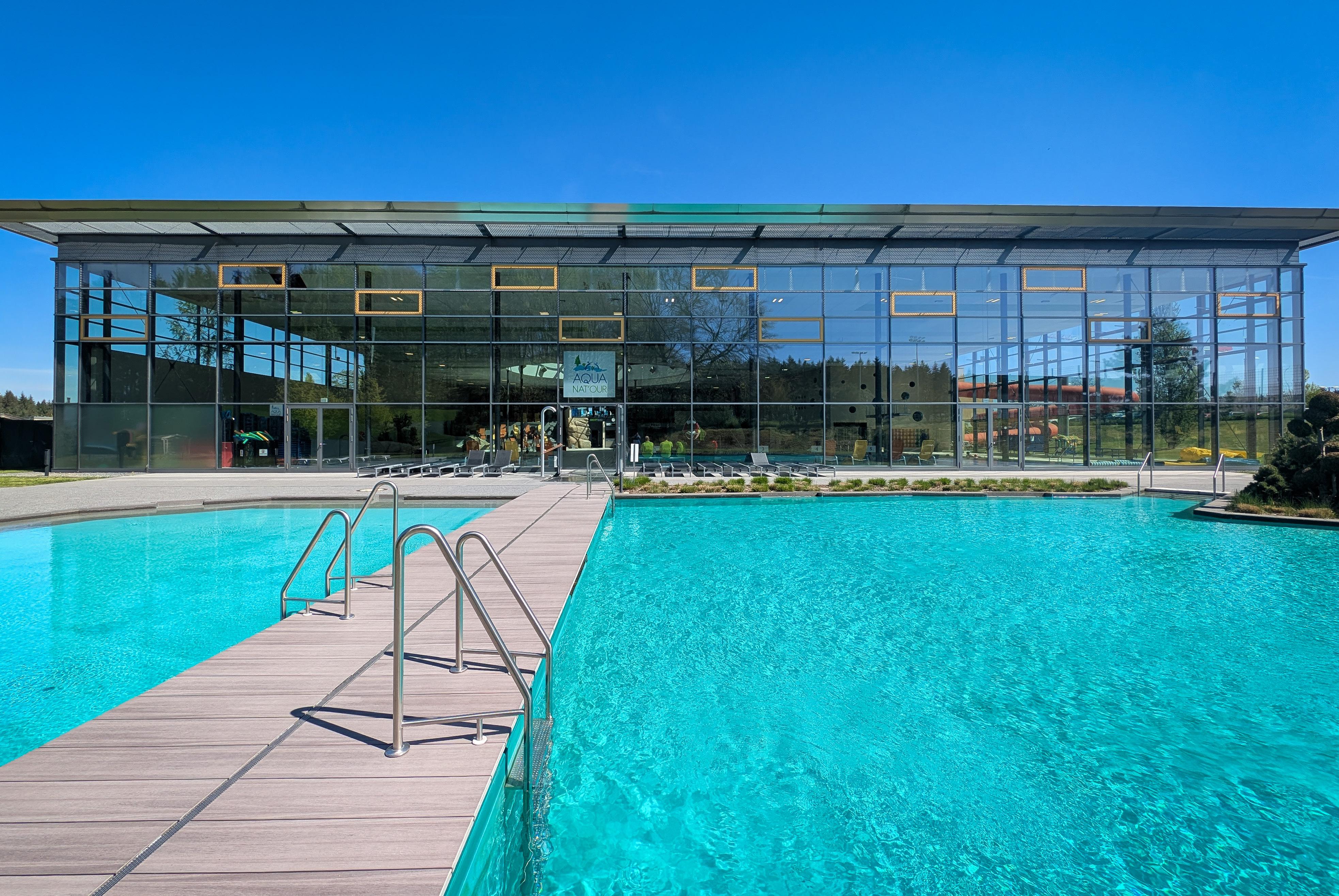
Your leisure and recreation paradise in northern
Luxembourg!
Relax and enjoy yourself at the swimming and adventure pool!
AquaNat’Our offers the ideal combination of fun, exercise, and relaxation.
Whether you want to let off steam in the swimming and adventure pool, complete intensive sports sessions, or unwind in the sauna – here you will find exactly what you need.
Choose for yourself: water, wellness, fitness, or simply everything together.



What Makes AquaNat’Our a Unique Leisure and Wellness Paradise in Northern Luxembourg?
AquaNat’Our stands out as a unique leisure and wellness destination in northern Luxembourg for several reasons. Its exceptional blend of modern infrastructure, natural integration, wellness excellence, and familyfriendliness sets it far apart from a typical public swimming pool.
Here’s what truly makes it special:
• A sports pool with an adjustable floor and diving zones.
• A leisure area with whirlpools, massage jets, and a slide.
• A dedicated children’s area for safe play and first water experiences.
• A natural swimming pond – a rarity for an indoor facility – that invites you to swim outdoors in summer.
• A modern and welcoming sauna area that is a core part of the wellness offering. Designed with the highest standards in mind, it combines classic sauna experiences with natural tranquility and modern amenities, both indoors and outdoors.
• Panorama Finnish sauna, 90°C
• Sanarium 55–60°C, approx. 40–55% humidity
• Steam bath (Hammam) 45–50°C, nearly 100% humidity
• Infrared cabins, 30–40°C
• Outdoor saunas by the natural pond (95°C and 80°C)
• Relaxation areas and sauna bar
• Natural swimming pond
• Cold plunge pool
The fitness center at AquaNat’Our is fully equipped with a wide range of strength and cardio machines for all fitness levels. The offering is complemented by functional training, personal coaching programmes, and access to classes such as aqua fitness or rehabilitation training. The bright, light-filled environment creates a motivating atmosphere – ideal for active guests and health-conscious beginners.
Very few centres in the Greater Region offer such a versatile mix of high-quality leisure options. Designed for all generations and needs:
• Accessible infrastructure for guests with limited mobility.
• Quiet areas for older adults and dynamic zones for teenagers.
• Inclusive programmes from baby swimming to senior aqua fitness.
How
Does AquaNat’Our Offer Everything Families, Sports Enthusiasts, and Relaxation Seekers Could Wish
For?
AquaNat’Our brings together water experiences, fitness, and relaxation amidst nature – offering everything families, sports lovers, and wellness seekers could ask for.
Its open and clear design makes AquaNat’Our particularly family and childfriendly. As a parent, you always have your little ones in sight and can enjoy your day worry-free. And thanks to our varied entertainment and animation programmes, younger visitors are guaranteed to have fun.
Active guests benefit from the 25-metre sports pool, modern fitness studio, and a wide range of aqua classes. Those seeking relaxation will find the perfect retreat in the elegant sauna landscape, featuring a panoramic sauna, steam bath, outdoor saunas, and cosy rest areas.
The on-site swimwear shop provides everything you need for a carefree stay in all areas.
In short, AquaNat’Our is a place where movement, well-being, and nature blend harmoniously – for every guest, in every season.



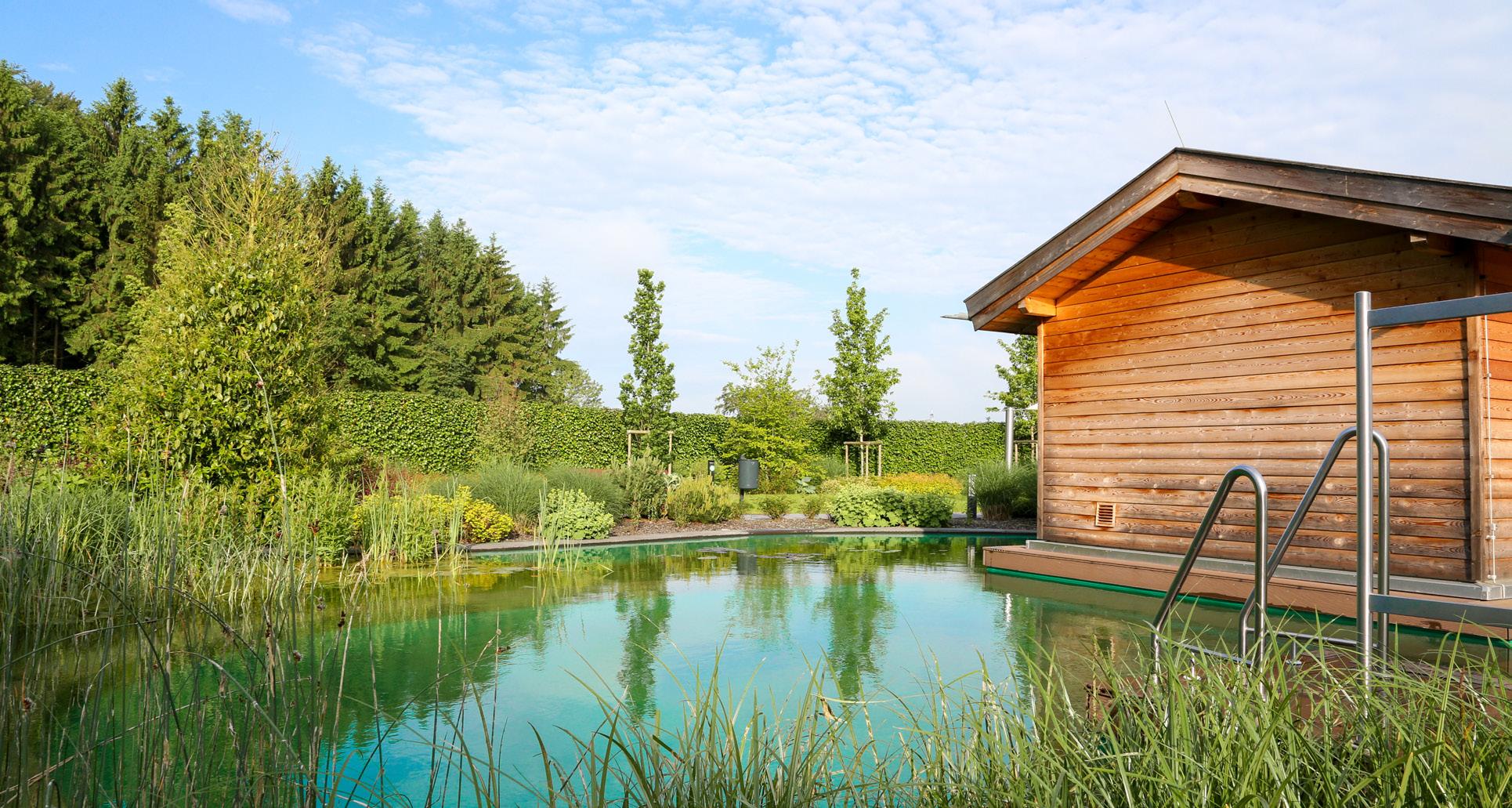
What Makes AquaNat’Our the Perfect Place at the Heart of Nature?
AquaNat’Our is not just surrounded by nature – it is part of it. Located in the Éislek, where silence and serenity meet, this wellness oasis offers the ultimate escape without ever leaving the landscape behind. It’s the ideal way to unwind after an active day in nature.
How
Does AquaNat’Our
Promote the Physical and Mental Well-Being of Its Guests?
AquaNat’Our’s mission is to offer a diverse and high-quality range of leisure and wellness services in a welcoming, safe, and sustainable environment.
It is committed to continuous innovation, excellent customer service, and the promotion of an inclusive and supportive environment –with the goal not just to meet, but to exceed guest expectations.
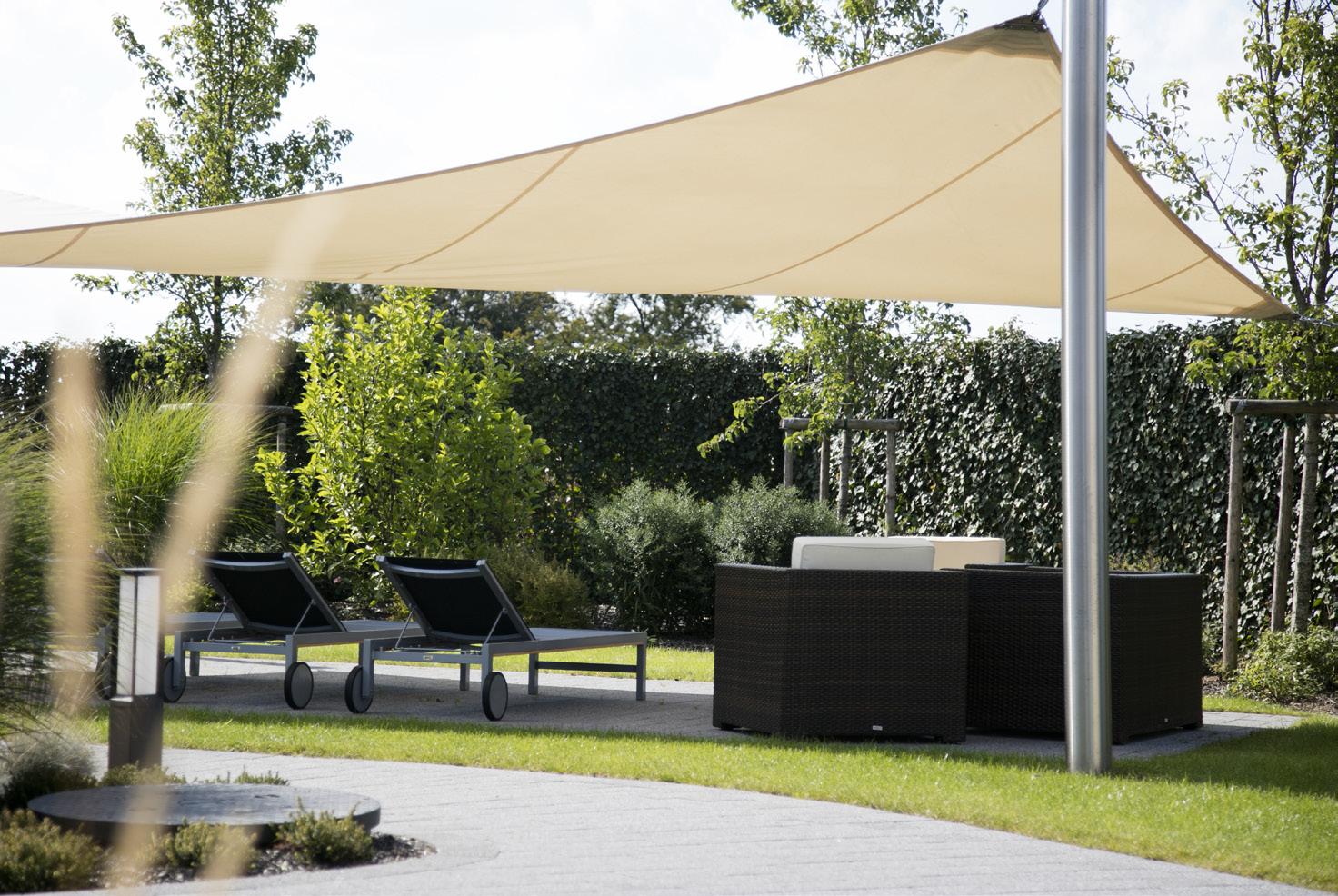
Why is AquaNat’Our an Integral Part of the Region and What Added Value Does It Provide?
As a weather-independent leisure and wellness destination, it perfectly complements the region’s nature tourism: Anyone hiking the Éislek region (e.g., the Éislek Trail), cycling, or visiting cultural sites like Vianden Castle can find year-round relaxation, activity, and well-being at AquaNat’Our – even in rainy weather or the off-season.
AquaNat’Our thus creates real added value as a place where active tourism, relaxation, and regional identity come together. Even the municipality of Hosingen recognises its contribution to quality of life:
“AquaNat’Our goes far beyond a typical leisure pool. Here, nature, health, and community meet for people of all generations. It enhances our quality of life and makes our region even more attractive.”
— Mayor of Hosingen
With classes ranging from aqua fitness to baby swimming, modern wellness areas, and a fully accessible design, AquaNat’Our promotes holistic health. All areas are barrier-free, including a pool lift that allows guests with reduced mobility to access the water.
Natural swimming ponds, panoramic saunas, and themed infusions create a space for rest, balance, and tranquility – indoors and out.
“At AquaNat’Our, health and well-being are at the heart of everything we do – for every guest, at all times.”
In Conclusion: Why Should Visitors Choose AquaNat’Our on Their Next Trip to Luxembourg?
Visitors should choose AquaNat’Our on their next trip to Luxembourg because it offers an experience that is relaxing, family-friendly, close to nature, and authentically regional. It’s not just something to do – it’s a destination worth planning for.
AquaNat’Our is also the perfect starting point to explore the treasures of northern Luxembourg:
• Our Nature Park & Éislek Trail – one of the most beautiful crossborder parks, ideal for hiking, biking, and nature lovers.
• Vianden Castle – an impressive medieval fortress just 15 minutes away.
• Clervaux – a charming town with a castle and the world-famous photo exhibition The Family of Man.

VISIT LUXEMBOURG Industry Insights
Outlook Travel (OT): Firstly, can you introduce us to Visit Luxembourg as the country’s national destination marketing organisation?
Dr Sebastian Reddeker, CEO (SR): Visit Luxembourg is a public-private partnership organisation representing a part of the country’s economy, specifically tourism.
We were actually founded many years ago as a national tourist office, then there was a structural switch and Luxembourg for Tourism (LFT) was born.
Historically we’re older than that, which is important because it’s a
We discover the enchanting allure of Luxembourg, from the cultural hub of the capital to its five unique regions, hiking trails, and culinary diversity with Dr Sebastian Reddeker, CEO of Visit Luxembourg
structure that people in Luxembourg know well, they appreciate that we’re there, and we have the local support to work not just inside the country but also on our main business, which is promoting Luxembourg elsewhere, mainly in our neighbouring countries.
OT: How do you set about your mission to promote Luxembourg as a tourist destination globally?
SR: We do international marketing, and everything starts with research. We have an important research department where we have a look at all the trends and data.
Dr Sebastian Reddeker, CEO
We have a communications department, together with a marketing section that set up the international ‘Luxembourg. Live the moment.’ campaign we’re doing at the moment. The campaign is basically 90 percent online and we are active on social media platforms, such as Instagram and Facebook which are increasingly important.
As demand remains, we are still present at fairs with our Visit Luxembourg stand, even though it was predicted after the COVID-19 pandemic that such events would cease to be popular. However, they’re still very important for us, especially thematic fairs for hiking and biking. We still do some classic PR work and have a wide range of print materials to accompany our digital platforms and products.
Our destination magazine Luci has received 12 international design awards. I think it’s very important to set up a destination magazine that has a certain quality made to keep and is not just another brochure to take and throw away.
OT: Why, in your opinion, should someone visit Luxembourg and discover its enchanting allure?
SR: Luxembourg for a lot of people is still a very unknown destination, but it’s worth visiting. It’s not just a city; there’s a whole country and five regions around it.
It’s a small 2,600 sqkm territory, but we have the hilly region of Éislek in the north that is part of the Ardennes. We also have the former industrial region of Minett in the south with a very interesting heritage, Mullerthal with its sandstone formations in the east, Guttland’s idyllic countryside in the centre, and the Moselle with its vineyards.
There is a variety of landscapes and experiences to discover. The combination of city and outdoors, accompanied by good food, is often a winner and easy to plan because of the short distances.

“In general, the cultural life is quite vibrant. In Luxembourg City alone, there are over 700 different events during the year and many of them are cultural”
– DR SEBASTIAN REDDEKER, CEO, VISIT LUXEMBOURG
OT: What tourist attractions and experiences would you recommend in the capital, Luxembourg City?
SR: The capital is the cultural hub of the country. European institutions are based here, and we have our cultural spots like the Philharmonie Luxembourg, Grand Théâtre, and many others.
Nearly all the nations you can find on Earth mingle and form this multicultural, multilingual society. Luxembourg is a historic place because of the fortress that was constructed over the centuries. It defines the cityscape, co-existing alongside the modern capital it has become. As a visitor, you can experience this microcosm of Europe.
OT: As well as diving into the capital, why should tourists also tour the country’s five unique regions?
SR: In under an hour from the capital, you can be in any of the country’s five regions. Where to go depends on what you like to do, but you’ll be surprised at just how much a small country has to offer.
Starting in the north, the hills and castles of Éislek invite visitors to hike and bike on trails in stunning natural surroundings.
Mullerthal is famous for its sandstone formations and the Mëllerdall UNESCO Global Geopark, which is a magnet for hikers and campers. Here, you also have Luxembourg’s oldest town of Echternach with its wonderful abbey.
Guttland in the centre is the place to go for slow tourism experiences and the Valley of the Seven Castles.
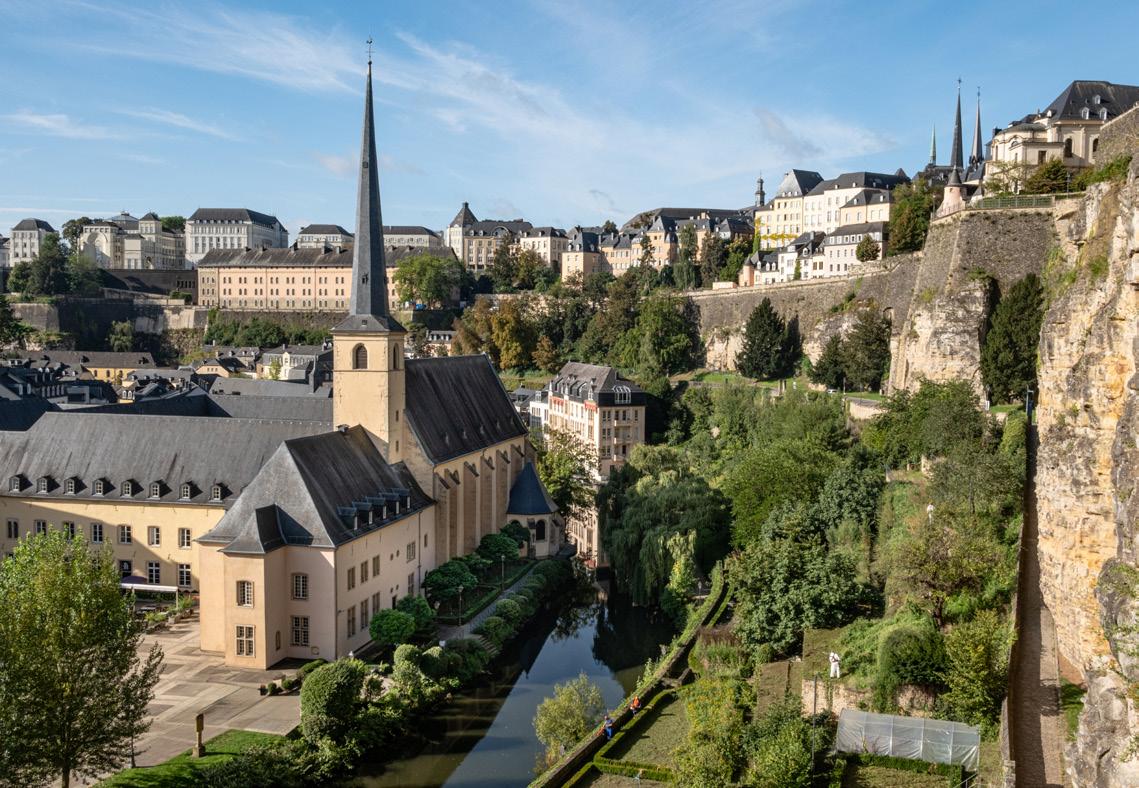
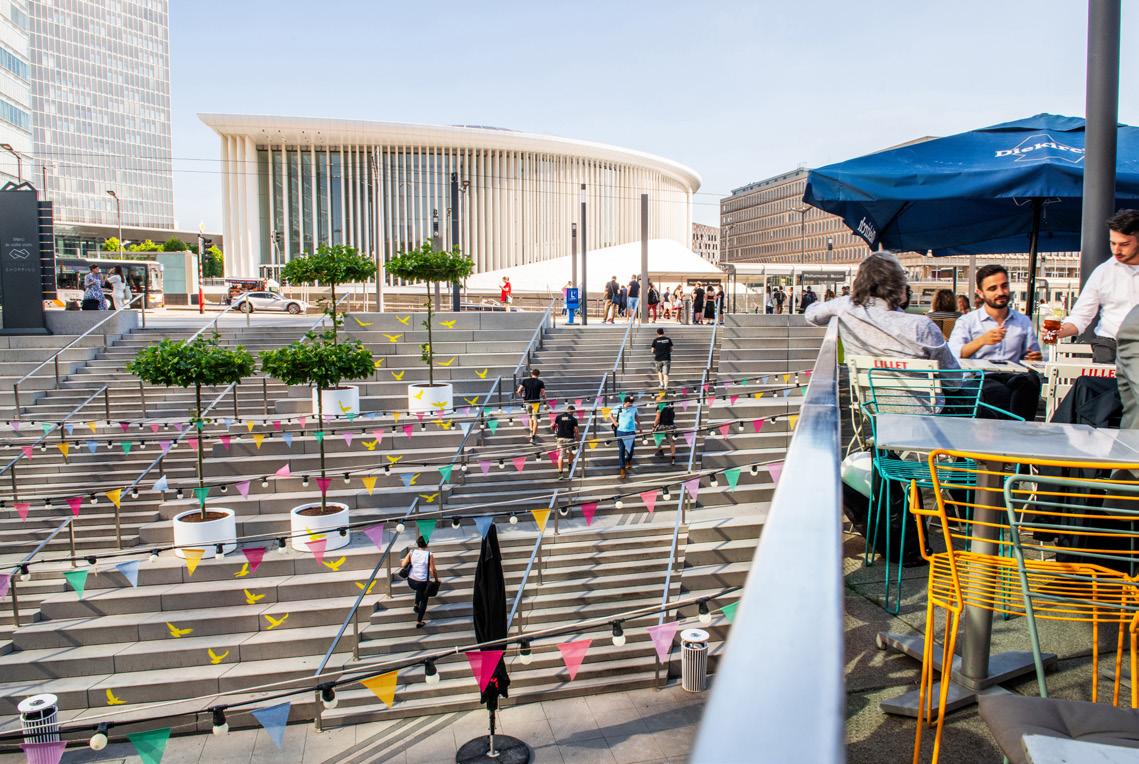

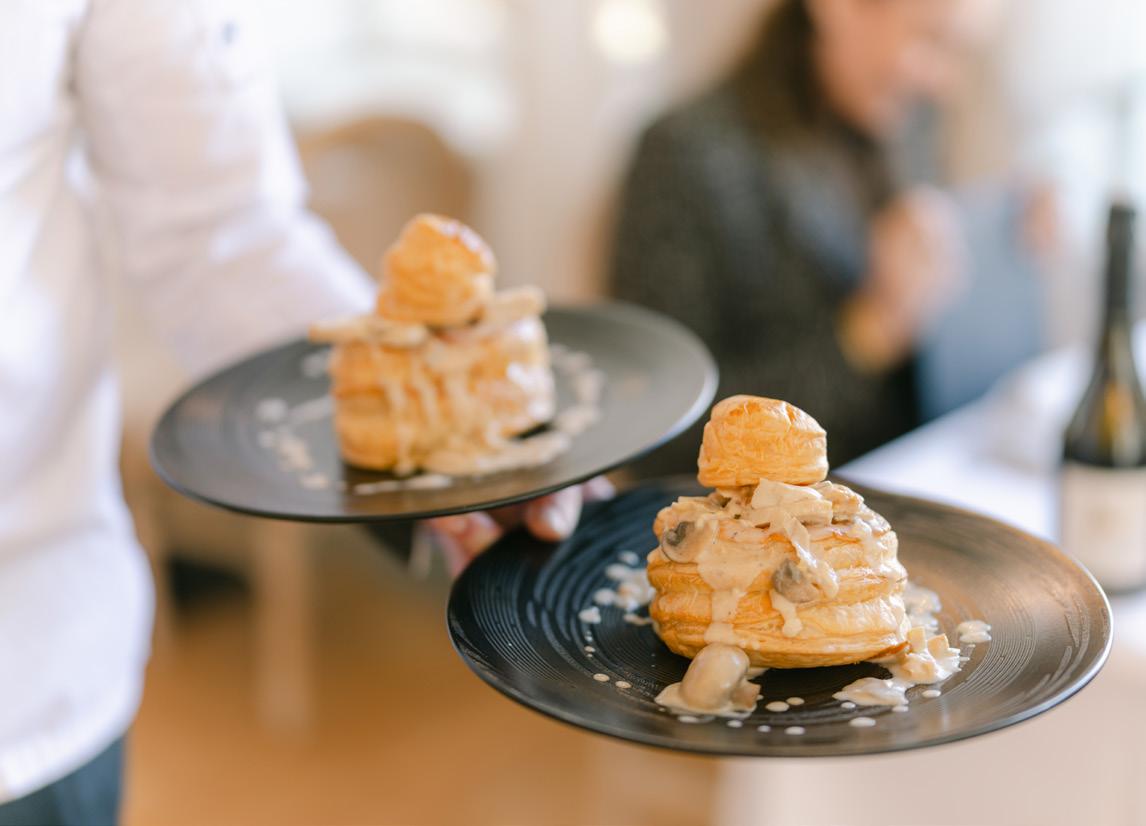
PHOTOGRAPHY: © VISIT LUXEMBOURG
PHOTOGRAPHY:
PHOTOGRAPHY:
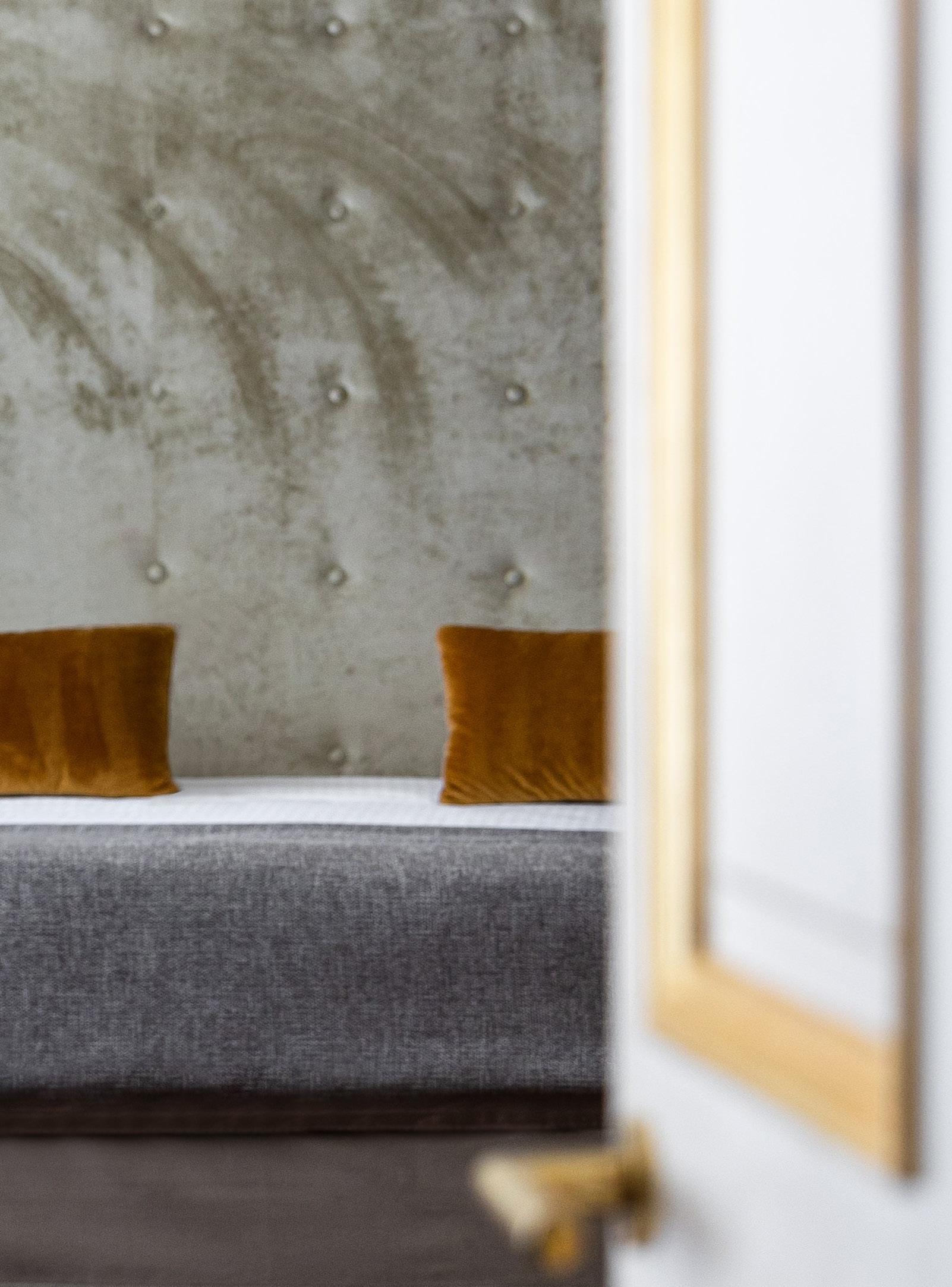
Committed to shaping a more sustainable future, Hôtel Le Place d’Armes has just been awarded the Green Key certification — a prestigious recognition of its environmental commitment. Environmental responsibility is deeply embedded in its daily practices: careful resource management, local sourcing, eco-conscious materials, and waste reduction. A discreet yet fundamental commitment, in perfect harmony with the values equally upheld by Relais & Châteaux.

At the heart of it all is La Cristallerie, the hotel’s finedining restaurant, set in a luminous space adorned with gilded detailing and Art Nouveau glasswork. Here, Chef Milan Brée orchestrates a refined, seasonal cuisine where precision meets emotion, a journey of taste designed to awaken the senses and surprise with grace. Just across the inner courtyard, Le Plëss offers a different rhythm. This contemporary rotisserie brings fire and flavour into focus, with elegant simplicity. Thoughtfully prepared meats, vegetables, and fish are elevated by the flame, and by the kitchen’s respect for ingredient integrity and bold, modern flair.
Finally, there's Le Café de Paris, a timeless brasserie that opens directly onto the bustling Place d’Armes square. Lively, welcoming, and full of local character, it’s a place for long lunches, aperitifs, or a late dinner in a setting that captures the city's unique blend of elegance and ease.
But to stay here is also to live Luxembourg. Just outside the hotel’s doors, the Place d’Armes square beats with café culture, music, and daily life. Steps away, the UNESCO-listed old town reveals its layers: from fortress walls and dramatic casemates carved into the rock, to peaceful gardens, panoramic views, and winding cobbled streets. A capital that feels both grand and human-sized, full of contrasts and surprises.
Thoughtfully engaged in its environment and its community, Hôtel Le Place d’Armes reflects Luxembourg itself, a city of heritage, elegance, and quiet energy.
WELCOME TO LE PLACE D’ARMES, YOUR STORY BEGINS HERE
In the heart of Luxembourg’s historic centre, Hôtel Le Place d’Armes offers a refined escape rooted in the soul of the city. A member of Relais & Châteaux, this five-star property brings together seven restored 17 th-century townhouses, each one adding depth and character to a hotel unlike any other. Beyond its beautifully preserved architecture, the hotel reveals a world of quiet sophistication. Curved staircases, natural textures, and soft lighting create a sense of calm intimacy. Every room and suite has its own identity — warm, elegant, and designed for moments of pause and inspiration.
Le Place d’Armes is also a destination for gastronomy, offering a trio of distinctive culinary experiences that reflect both the richness of French culinary tradition and the creative spirit of modern Luxembourg.

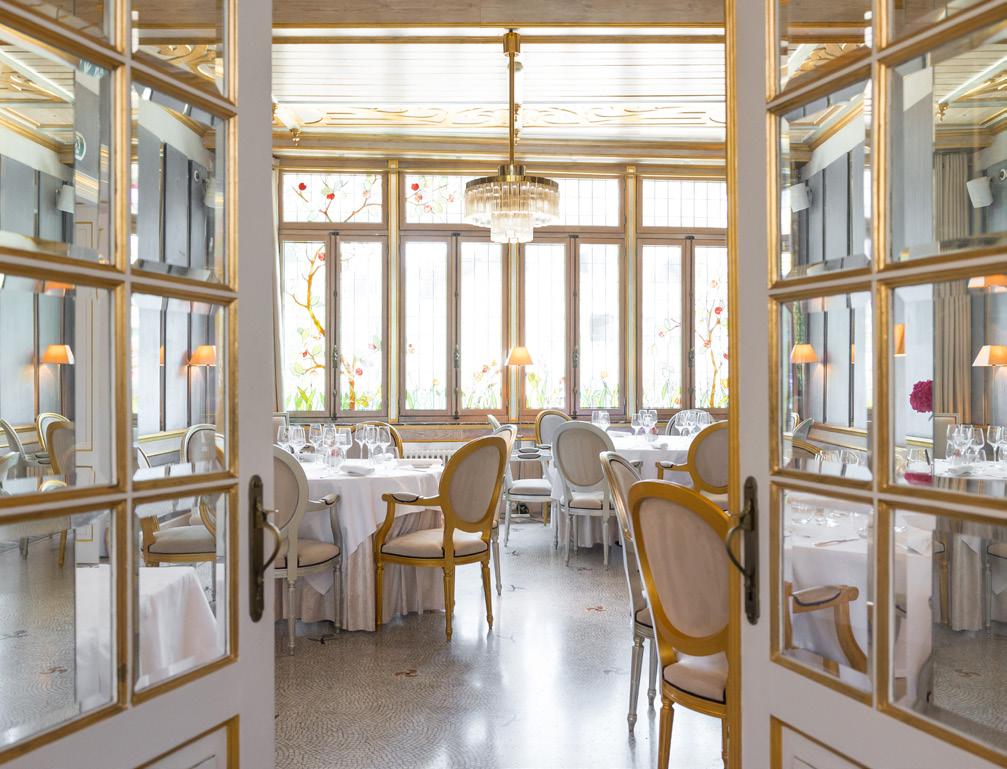
Industry Insights
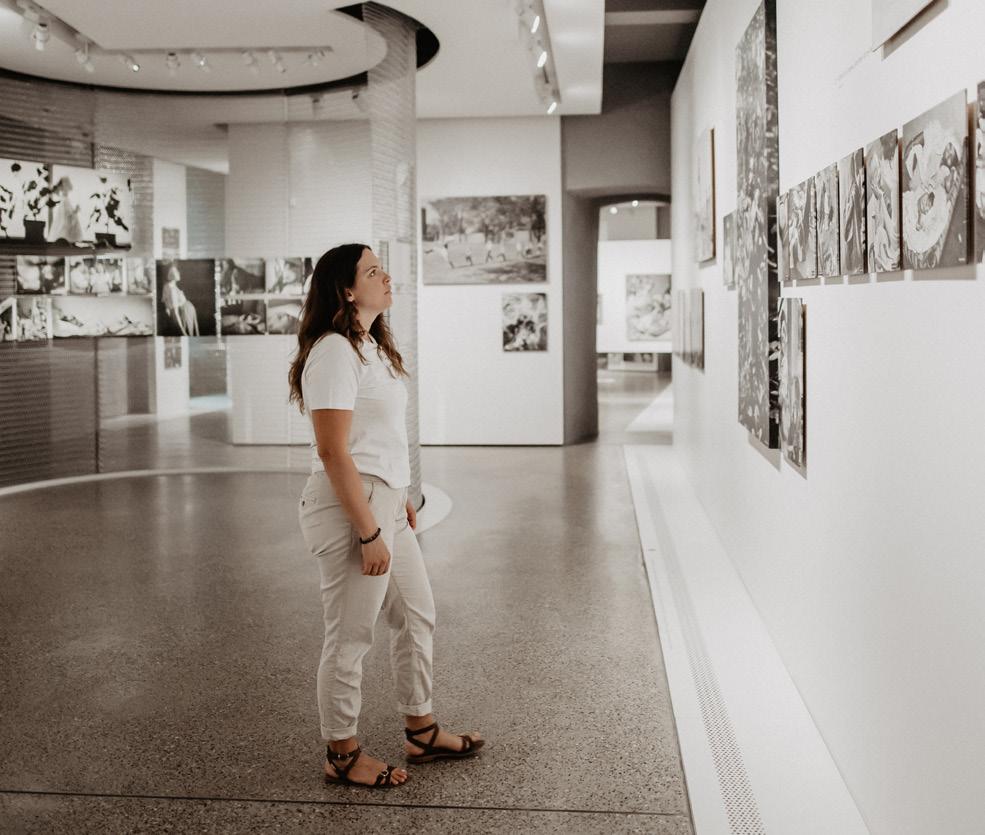
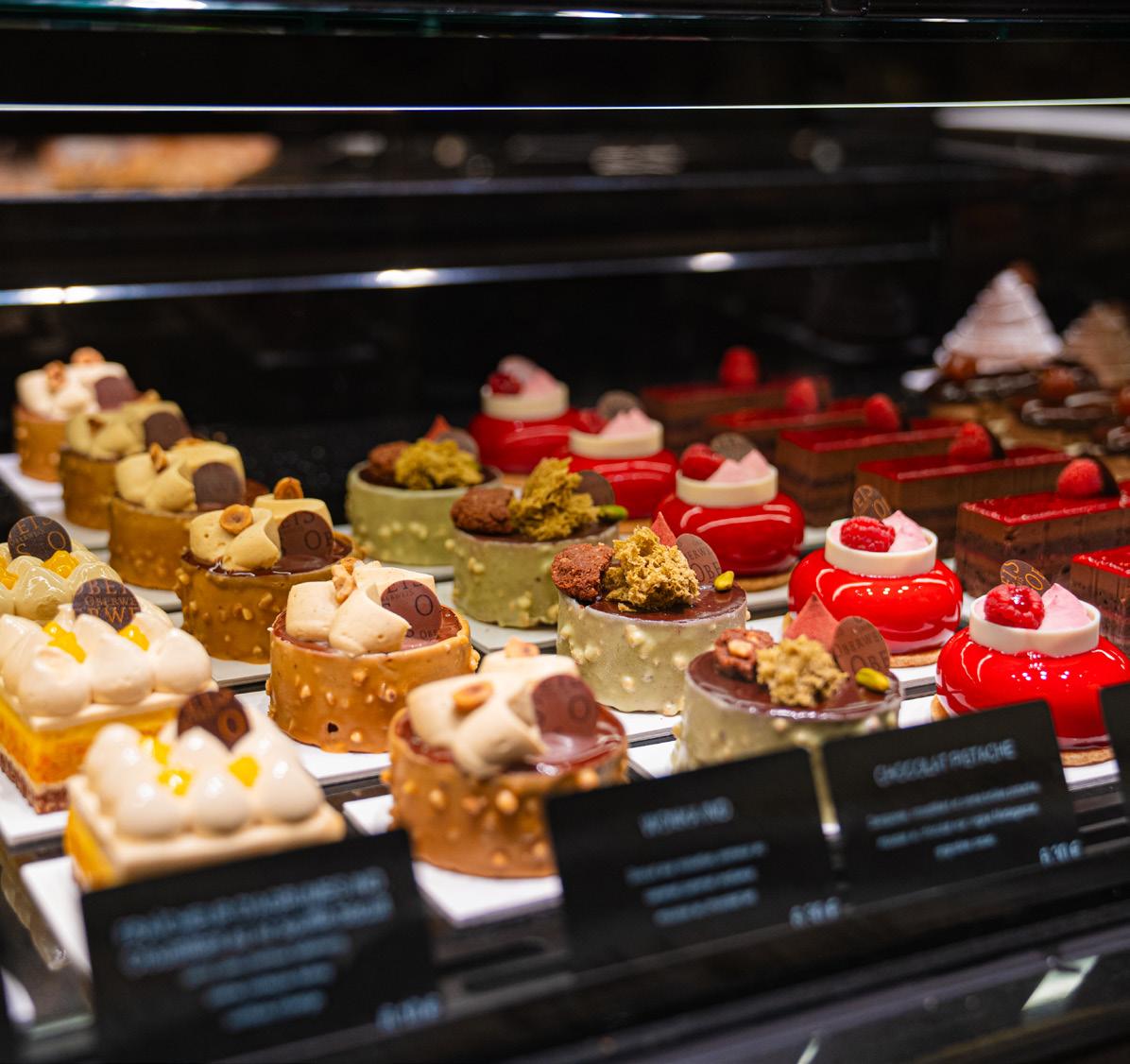
Luxembourg’s vineyards and wine cellars are dotted along the Moselle river. Schengen is a picturesque village well-known to everybody who travels as the Schengen Agreement was signed there. Schengen and the Moselle are ideal to feel the European spirit, as well as for food and wine.
In the south, you have Minett, also known as the ‘Land of the Red Rocks’ because of the red earth. You can visit the remains of industrial production in Luxembourg, where they mined iron to produce steel, as well as explore a UNESCO Biosphere Reserve.
OT: With one of the densest trail networks in Europe, what makes Luxembourg the ideal destination for hikers?
SR: Luxembourg has two routes certified by the European Ramblers Association as ‘Leading Quality Trails – Best of Europe’ in Éislek and Mullerthal.
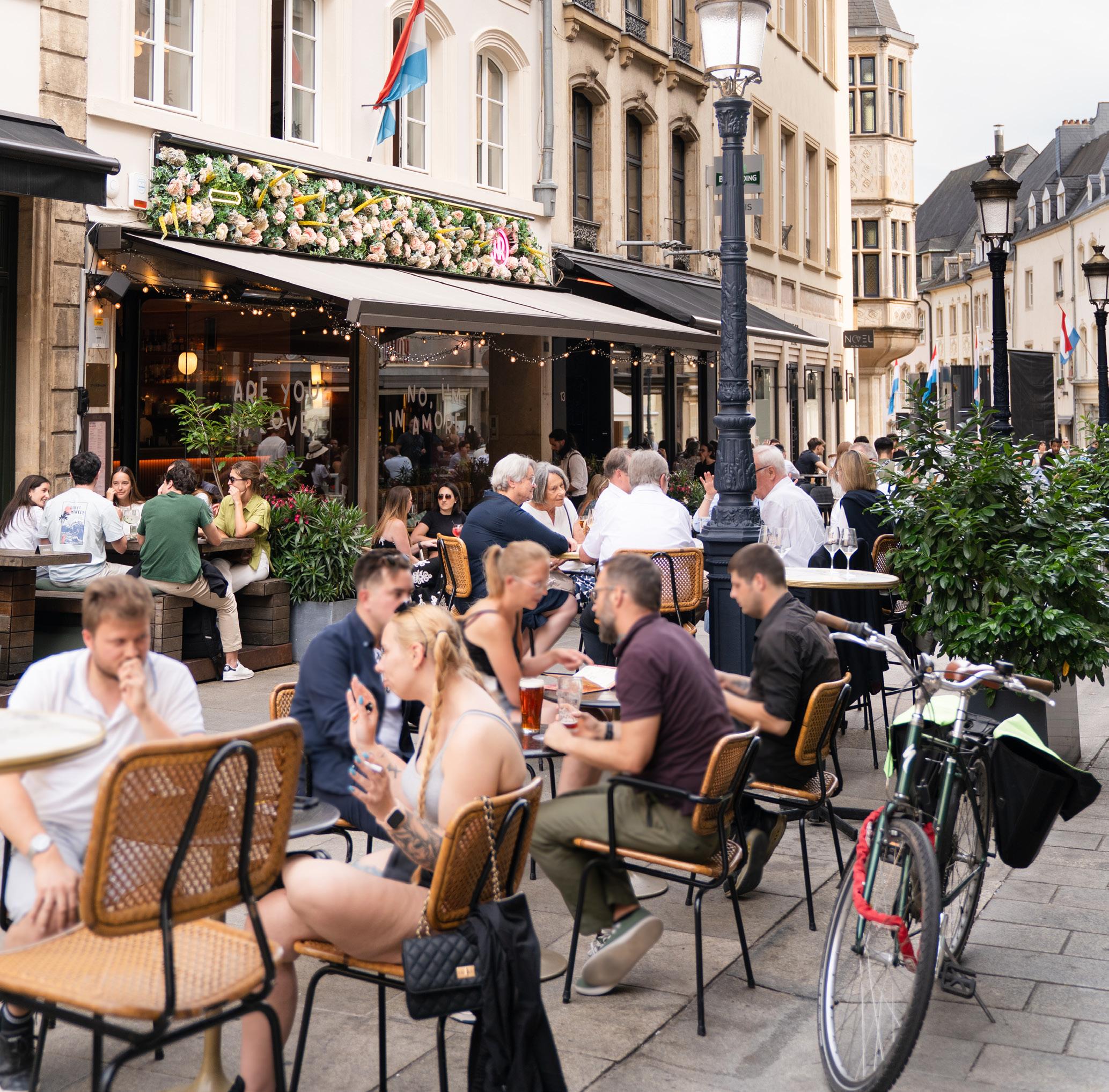

“We are proud of our country, would like to show it to others, and are ready to welcome people”
– DR SEBASTIAN REDDEKER, CEO, VISIT LUXEMBOURG
We have different hiking levels, from comfort hikes which are accessible to all, up to high-end, multi-stage hiking trails which people come from far away to experience.
The 112km Mullerthal Trail can be split into three different circuits and gives you a fascinating experience of not only the Luxembourg countryside, but also the geological history of the country.
OT: Equally, what inspiring cultural hotspots are there to discover in Luxembourg?
SR: In general, the cultural life is quite vibrant. In Luxembourg City alone, there are over 700 different events during the
year and many of them are cultural. Summer in the City offers months of free open-air concerts and festivals. Thousands of people come to City Sounds or Kinnekswiss Park to hear top artists including the Luxembourg Philharmonic Orchestra and international guests of all genres. There’s also the Mudam, which houses contemporary art and is an architectural icon. Art is a very important aspect of cultural life in the country, and we have events such as Luxembourg Art Week and Lux Film Fest. Lots of them are held in public places, parks, and castles, so it’s definitely worth having a look at the agenda.
PHOTOGRAPHY: © JENISKA PHOTOGRAPHY
PHOTOGRAPHY: © VISIT LUXEMBOURG
PHOTOGRAPHY: © VISIT LUXEMBOURG
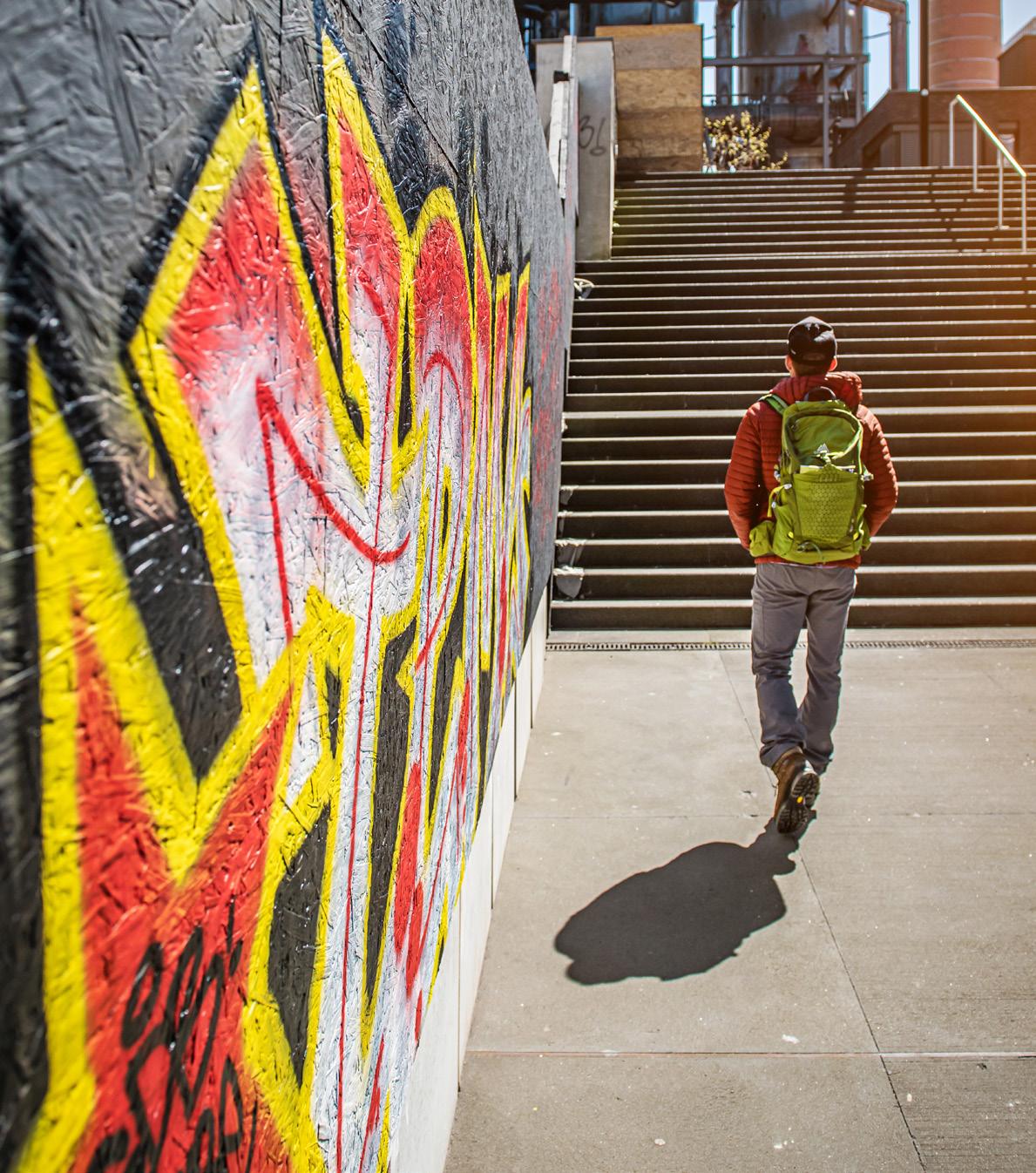
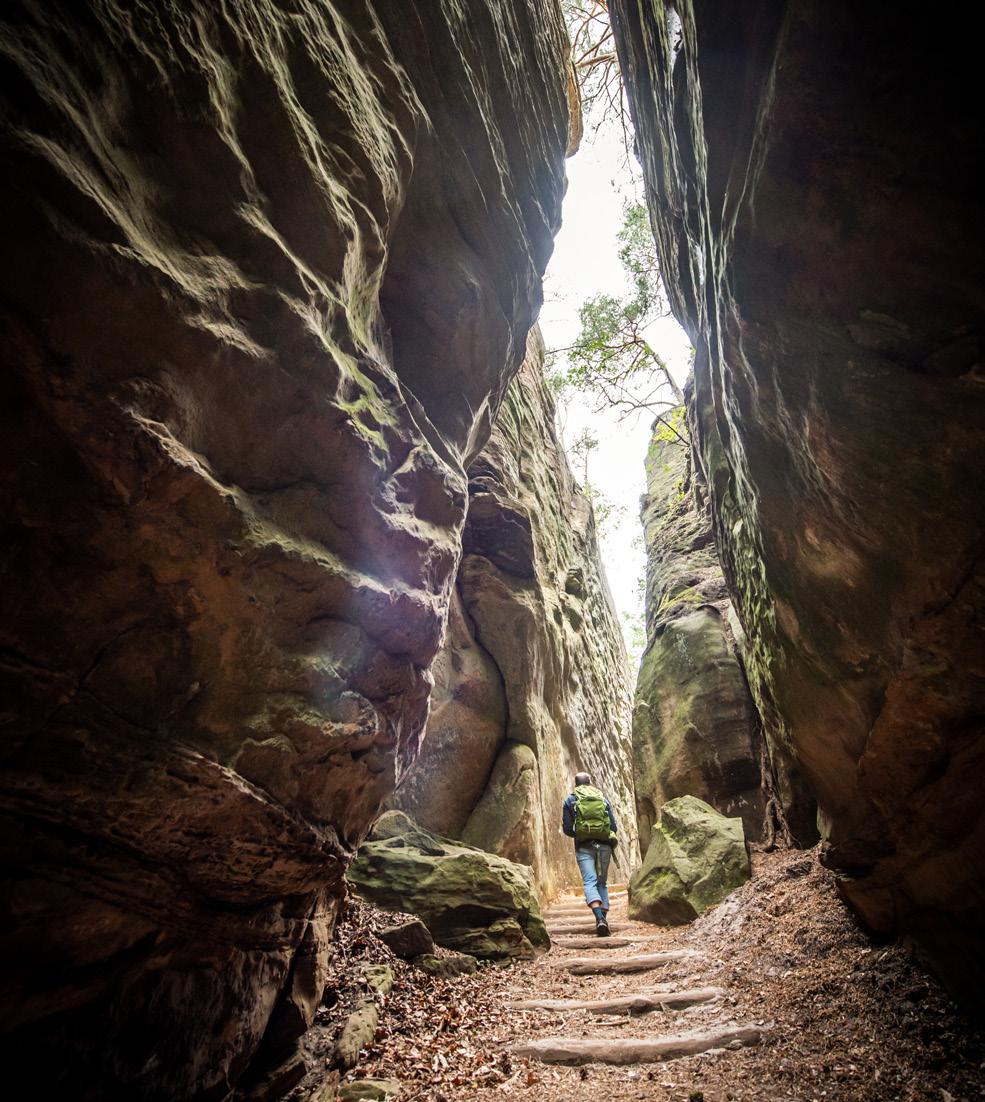
OT: Why do foodies also find themselves falling helplessly in love with the country?
SR: I would say it’s the diversity of culinary approaches that seduce the foodies. Traditional Luxembourg cuisine is rooted in the history of the country. That said, we have highend French-style cuisine, a touch of German, and a lot of Portuguese and Italian influences, amongst others.
The quality of food and gastronomy in Luxembourg is really high. We have some Michelin-starred restaurants, but on the other hand, we also have a lot of street food and urban gardening projects.
To understand the culinary diversity of Luxembourg, it’s important to know that it’s not just a city. You can get to know the whole country’s agricultural production when you’re here.
The Moselle region especially is known for crisp white wines like Pinot


gris and Riesling, but also fine Pinot noir. And, of course, the Crémant de Luxembourg, our own sparkling treasure made in the same way as French champagne.
OT: Finally, are you optimistic about the future of tourism in Luxembourg?
SR: I’m optimistic because if you compare the general evolution of tourism and the situation of Luxembourg, we have some clear advantages.
Firstly, the weather is not too hot for prolonged periods. The weather can be beautiful throughout the year, but it is not guaranteed, so we can’t promote Luxembourg as a sunny destination. We see more Spanish and Italian tourists coming during the summer because it’s too hot in Southern Europe. We also see many people looking to avoid crowded
places choosing somewhere off the radar instead.
Luxembourg has an economic structure that is not completely reliant on tourism like many other destinations in Europe. I wouldn’t say tourism is an add-on, but there is space for you as a visitor, and your experience is not overcrowded or stressful in that sense at all.
There is considerable support for tourism from the local population, which is always important. We are proud of our country, would like to show it to others, and are ready to welcome people.

+352 428282-1
info@visitluxembourg.com visitluxembourg.com
PHOTOGRAPHY: © ANDRÉ SCHÖSSER
PHOTOGRAPHY: © VISIT LUXEMBOURG
PHOTOGRAPHY: © ANDRÉ SCHÖSSER
PHOTOGRAPHY: © ANDRÉ SCHÖSSER
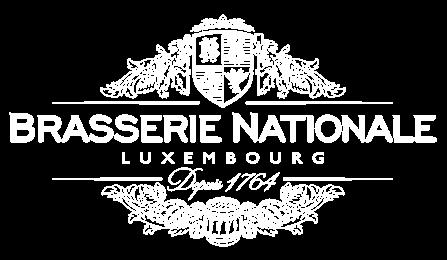

Tradition, Quality, and Innovation
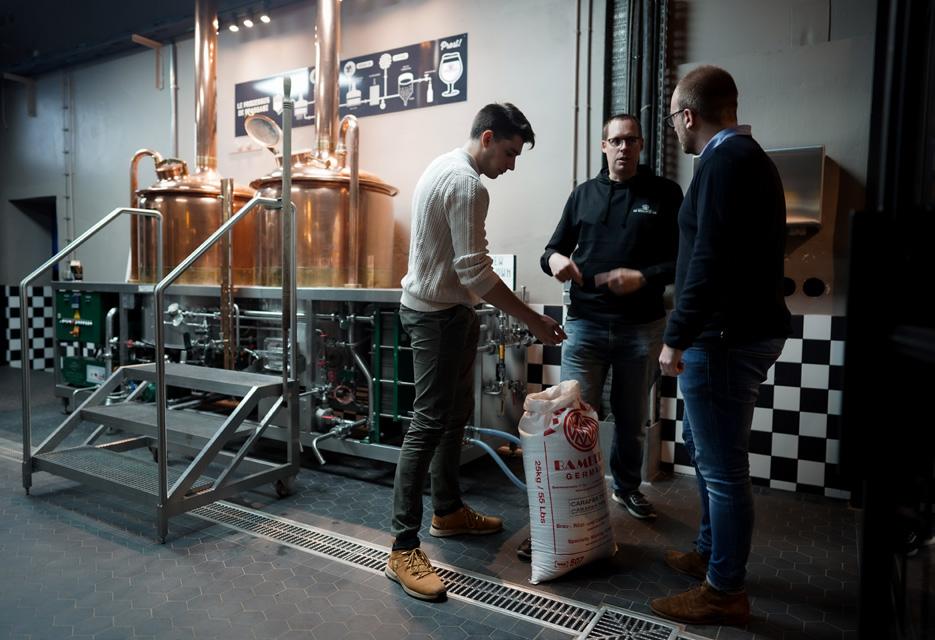
Seamlessly blending tradition and innovation, Brasserie Nationale has been proudly shaping Luxembourg’s brewing landscape for centuries, crafting exceptional, world-class beers that delight taste buds and transcend generations
The simple joy of savouring a well-crafted beer is often taken for granted.
Yet behind every sip lies passion, expertise, and innovation — a heritage worth celebrating.
That’s exactly what Brasserie Nationale embodies at its state-of-the-art brewery in Bascharage: a deep respect for the art of brewing, combined with an unrelenting drive to innovate. A family business for 10 generations, Brasserie Nationale has been a cornerstone

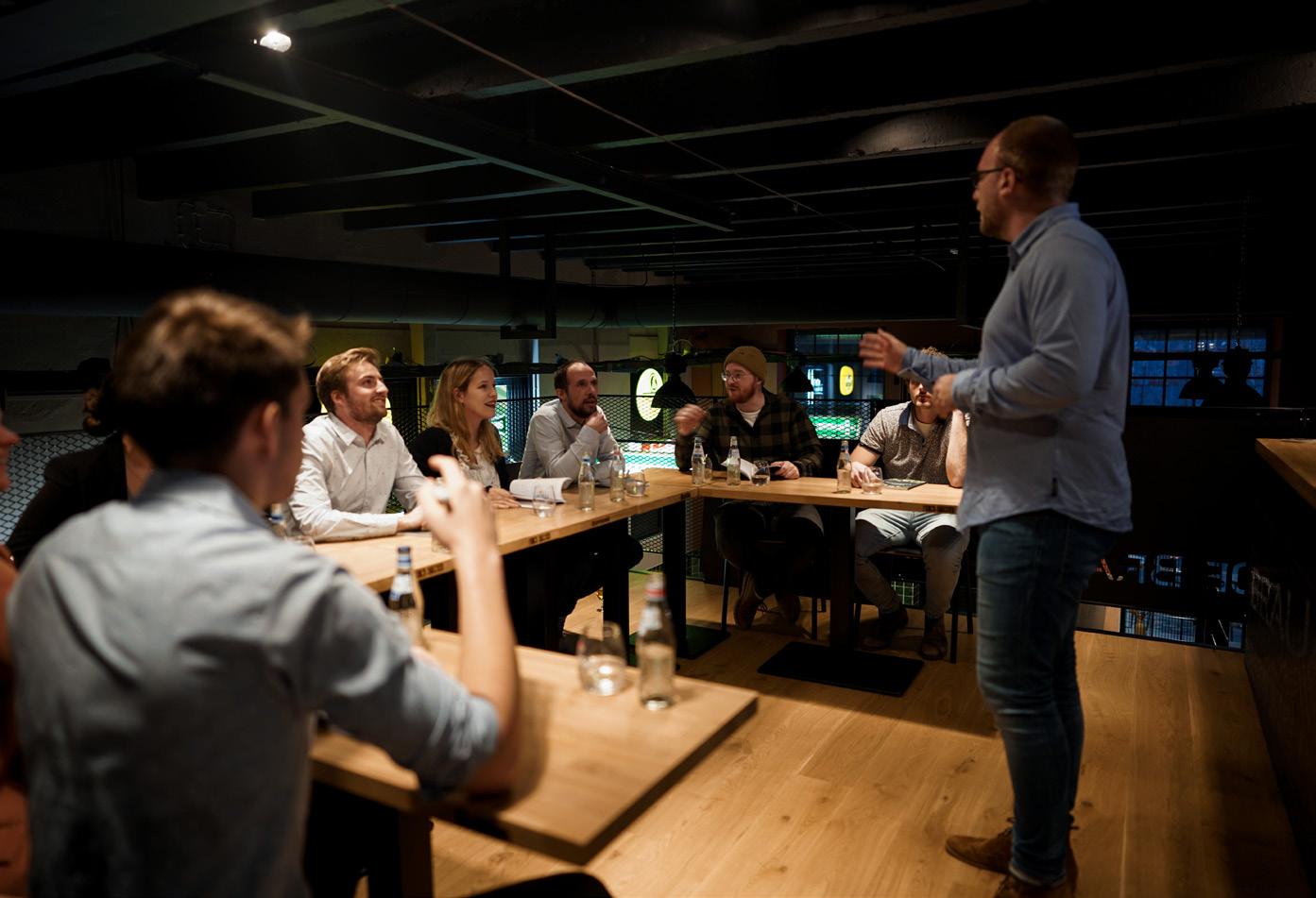
of Luxembourg’s brewing scene for over 250 years. Through its flagship brands — Bofferding, Battin, Funck-Bricher, and its natural mineral water Lodyss — the brewery continues to place tradition, quality, and forward-thinking at the heart of everything it does.
The perfect balance between heritage and modern expertise guarantees excellence in every glass. Strict quality control, the mastery of experienced brewers, cutting-edge facilities,
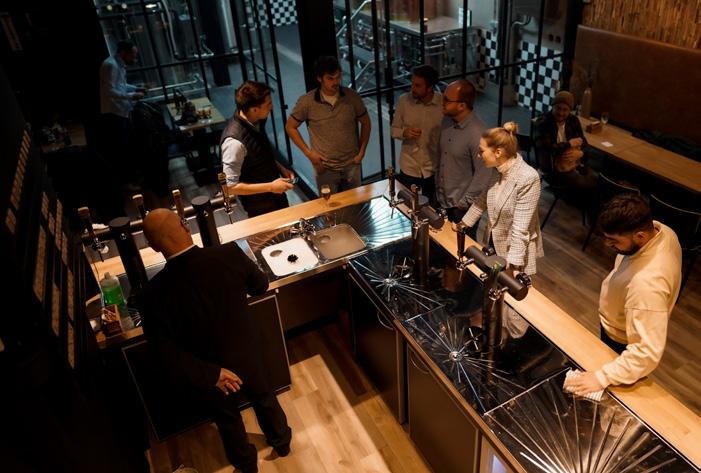
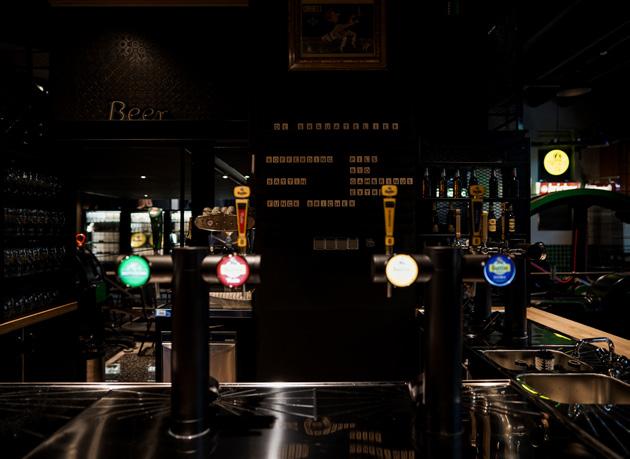




BRASSERIE NATIONALE’S EXTENSIVE HISTORY
1764 – The beginning. The Lentz family opened the Funck-Bricher Brewery in Luxembourg City.
1844 – The birth of a new brewery. The Bofferding brewery was created in the south of Luxembourg, on the same site where Brasserie Nationale stands today.
1937 – Foundation of the Battin brewery. Spirits merchant Charles Battin founded the Brasserie Battin in Esch-sur-Alzette.
1975 – The birth of Brasserie Nationale. FunckBricher and Bofferding breweries merged and brought all of their production facilities to the Bascharage site to produce under the name Bofferding.
1986 – Infrastructure modernisation. Brasserie Nationale launched a series of modernisation projects to enable production on a larger scale.
1999 – Acquisition of Munhowen distribution. To reorganise the distribution of products, Brasserie Nationale acquired Munhowen Distribution, becoming the sole retailer of the brewery’s products.
taste and consistency. Central to this process is the traditional slow brewing method, where beers mature for five to six weeks, depending on the recipe. This method requires a primary fermentation phase of eight days, followed by about 27 days of maturation before the beer is ready to be bottled, resulting in a truly distinctive flavour profile.


2004 – Acquisition of the Battin brand. The Battin brewery was acquired, and production moved to the Bascharage site, whilst continuing to be produced under the Battin name.
2018 – Rebirth of the Funck-Bricher brand. More than 40 years after its disappearance, the FunckBricher brand made a comeback with a new lowgluten, organic, and vegan beer.
2020 – Creation of Lodyss. Brasserie Nationale announces the launch of its natural mineral water,
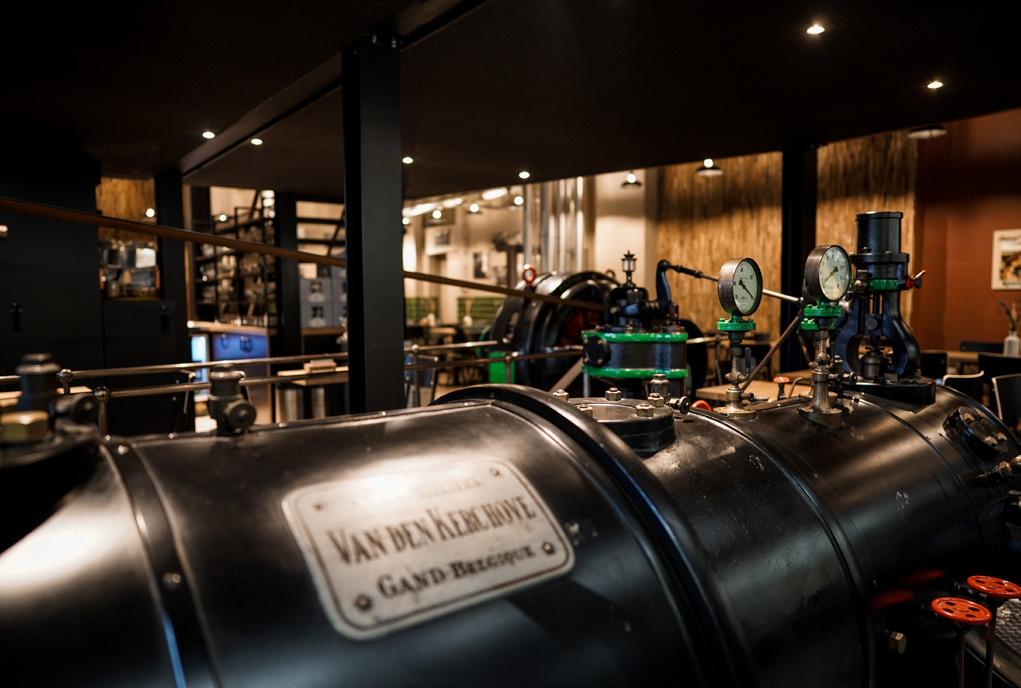

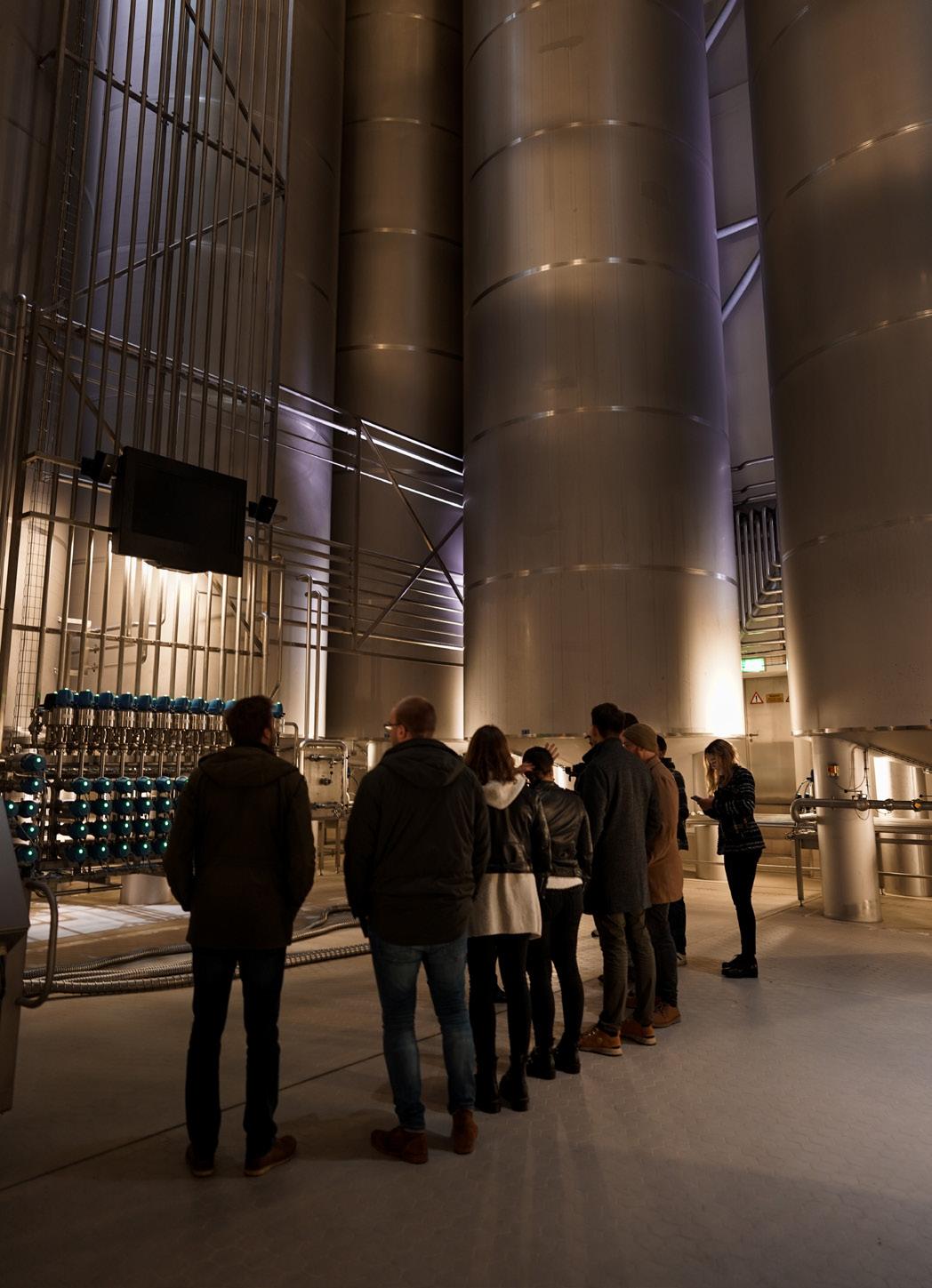
Brasserie Nationale’s brewing process is based on the Reinheitsgebot – the German purity law dating back to 1516, which at first defined the three essential ingredients for brewing beer: water, malt, and hops, adding a fourth ingredient, yeast, later on, to further guarantee the beer’s quality.
The brewery sources a variety of hops from Hallertau in Bavaria, the world’s largest hopgrowing region. Brasserie Nationale then uses its own yeast which is selected for its excellent fermentation qualities. Malt, produced by the controlled germination of barley, provides the beer’s distinct flavour and comes from the Greater Region and Bavaria. The final, yet one of the most crucial ingredients in the process, is water. The brewery draws all its water from its own natural springs, 317 metres below ground.
Free from pollution, this uniquely pure water is carefully monitored at all times and used to produce Lodyss natural mineral water.
MEMORABLE MOMENTS AT THE HEART OF THE BREWERY
Brewed from the finest certified raw materials, Brasserie Nationale’s beers are 100 percent natural, with no additives or preservatives.
As a member of The Brewers of Europe, the brewery places great importance on product transparency, which is why it clearly states ingredients on all its packaging.
Along with its dedication to transparency and quality, Brasserie Nationale offers various activities for those seeking beer-inspired fun and education. There is a guided tour of the brewery, where both beer experts and novices alike can get a behind-the-scenes look at the beer’s state-of-the-art production process.
Here you can immerse yourself in a journey through over two centuries’ worth of history and indulge in a tasting of Lodyss water at its source, distilled beer, Gezwéckelten – finished unfiltered beer, and several beers from the microbrewery, De BrauAtelier.
If you want to become a brewmaster for a day, embark upon the #BrewYourOwnBeer experience, where you can take part in the main brewing process and choose your own recipe with the microbrewer. You can revel in your newfound beer-making skills with 150 litres of your own ale in personalised bottles to be collected six to eight weeks after the activity.
The brewery also offers pouring courses, teaching enthusiasts the perfect technique to serve beer – a must for anyone who wants to enjoy every pint at its best.
Whether you are a curious visitor or a seasoned beer lover, every moment spent at Brasserie Nationale is an invitation to explore, discover, and taste excellence.
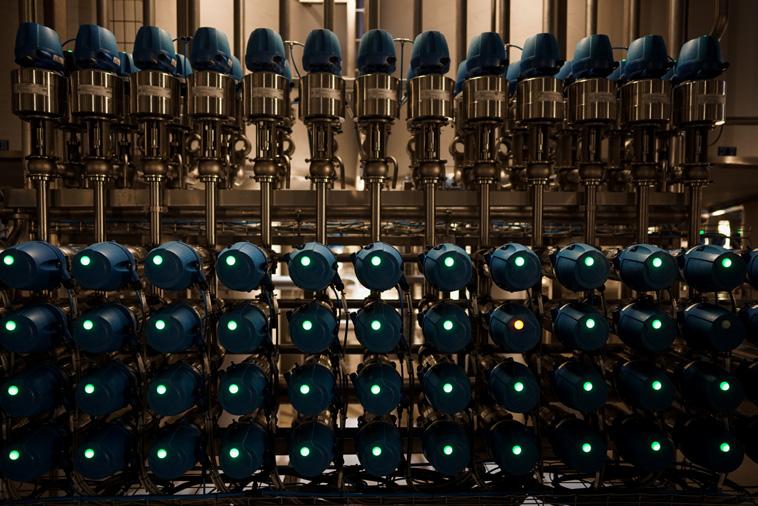

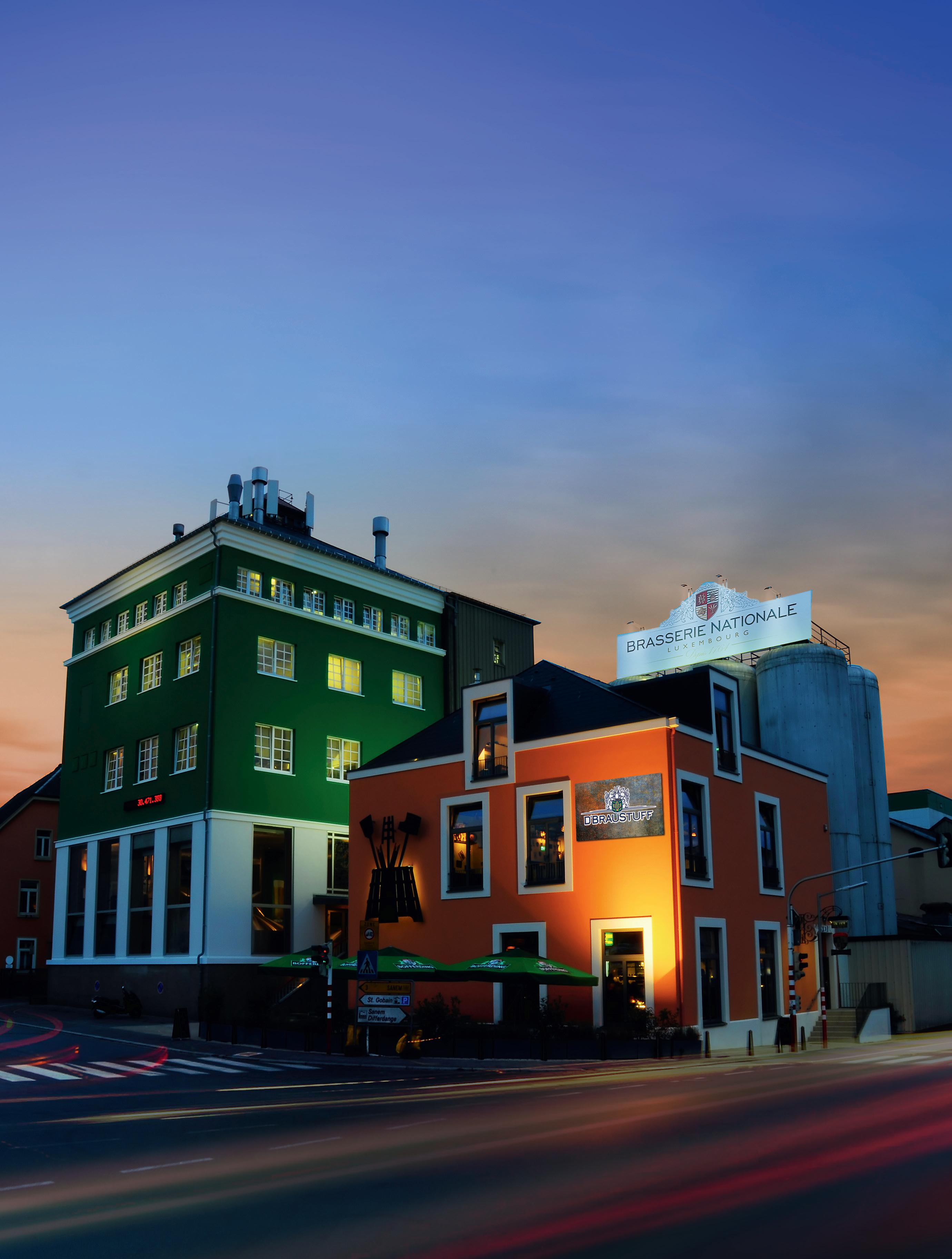
and take a behind-the-scenes look at the production of Luxembourg’s largest brewery!




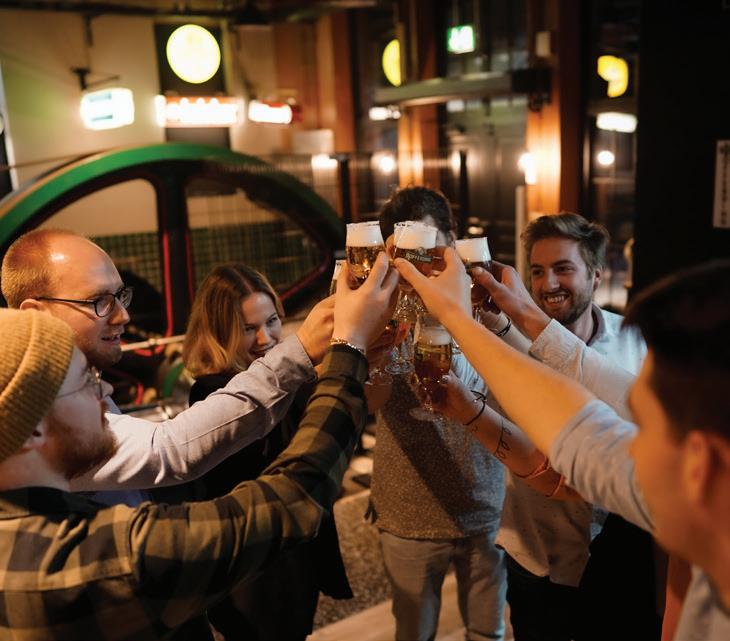
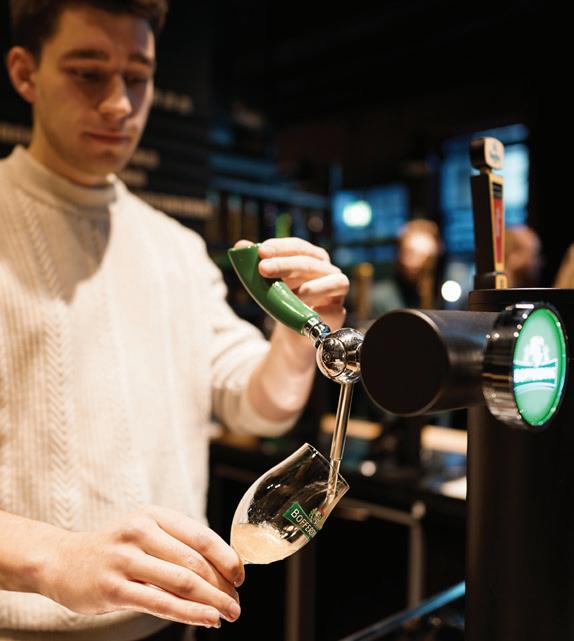


RECOMMENDS
Eat:
FOR AN ODE TO LOVE AND EXCELLENCE…
Mosconi celebrates the passion for Italian flavours, the delicate marriage of creativity and rigour, and the triumph of culinary excellence.
It is a love story that unites Ilario and Simonetta Mosconi, who have been jazzing up the fine dining scene in Luxembourg since 1986. Originally from Lombardy, the couple welcomes you into a handsome townhouse steeped in swish elegance and boasting a terrace by the Alzette river.
Do:
FOR A WATER WORLD OF FUN AND WELLNESS…
AquaNat’Our offers families, amateur athletes, and professional swimmers an area of over 3,500 square metres for exercise and relaxation.

Whether you want to have fun in the swimming pool, enjoy a workout, or recharge your batteries in the sauna, there’s something for everyone.
You will find a diverse range of water activities at AquaNat’Our, including warm, cold, and natural pools, a steam bath, and an inviting lounge area.
The cold pool is a refreshing 16°C, ideal for revitalising the body and mind, promoting circulation, strengthening the immune system, and recovering after a workout. As soon as the temperatures rise, you can also cool off in the natural outdoor pool, which features a sophisticated self-cleaning system.
At 36°C, the warm pool invites you to relax and unwind with soothing bubble loungers, massage jets, and neck showers that relieve tension and stress.
Equally, the steam bath at AquaNat’Our offers the perfect opportunity for wellness and rejuvenation. The essential oils used have a positive effect on your respiratory system and lungs, whilst the high humidity deeply cleanses your skin.
The 12.5 metre (m) by 25m swimming pool offers ideal conditions for active swimmers, with an adjustable, moveable floor allowing for variable water depths ranging from 0.45m to 1.8m. This enables swimming conditions to be flexibly adapted to the needs of different groups, whether for training sessions, swimming lessons, or recreational swimming.
AquaNat’Our offers a wide range of aqua classes, from gentle movements to intense workouts, and swimming lessons for all levels, ensuring everyone learns at their own pace in a pleasant, supportive environment.

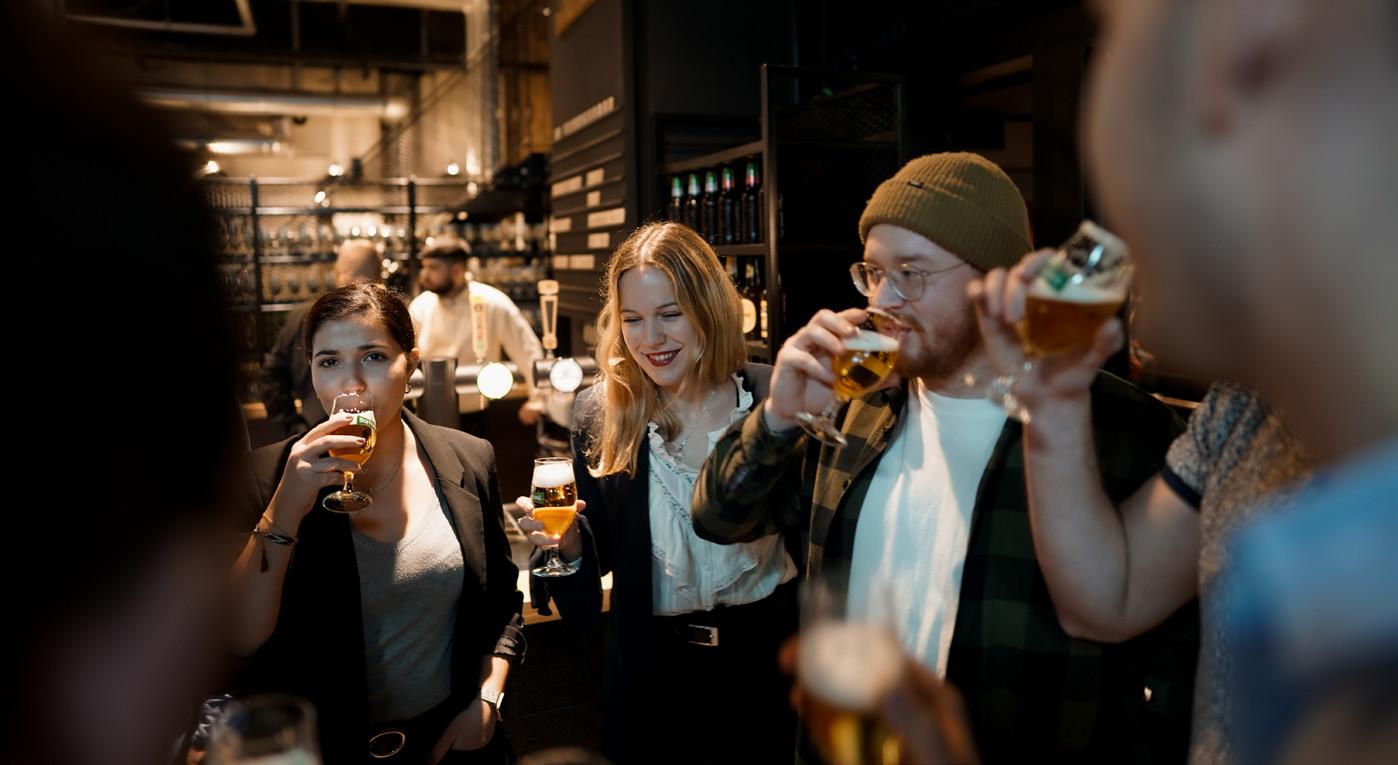
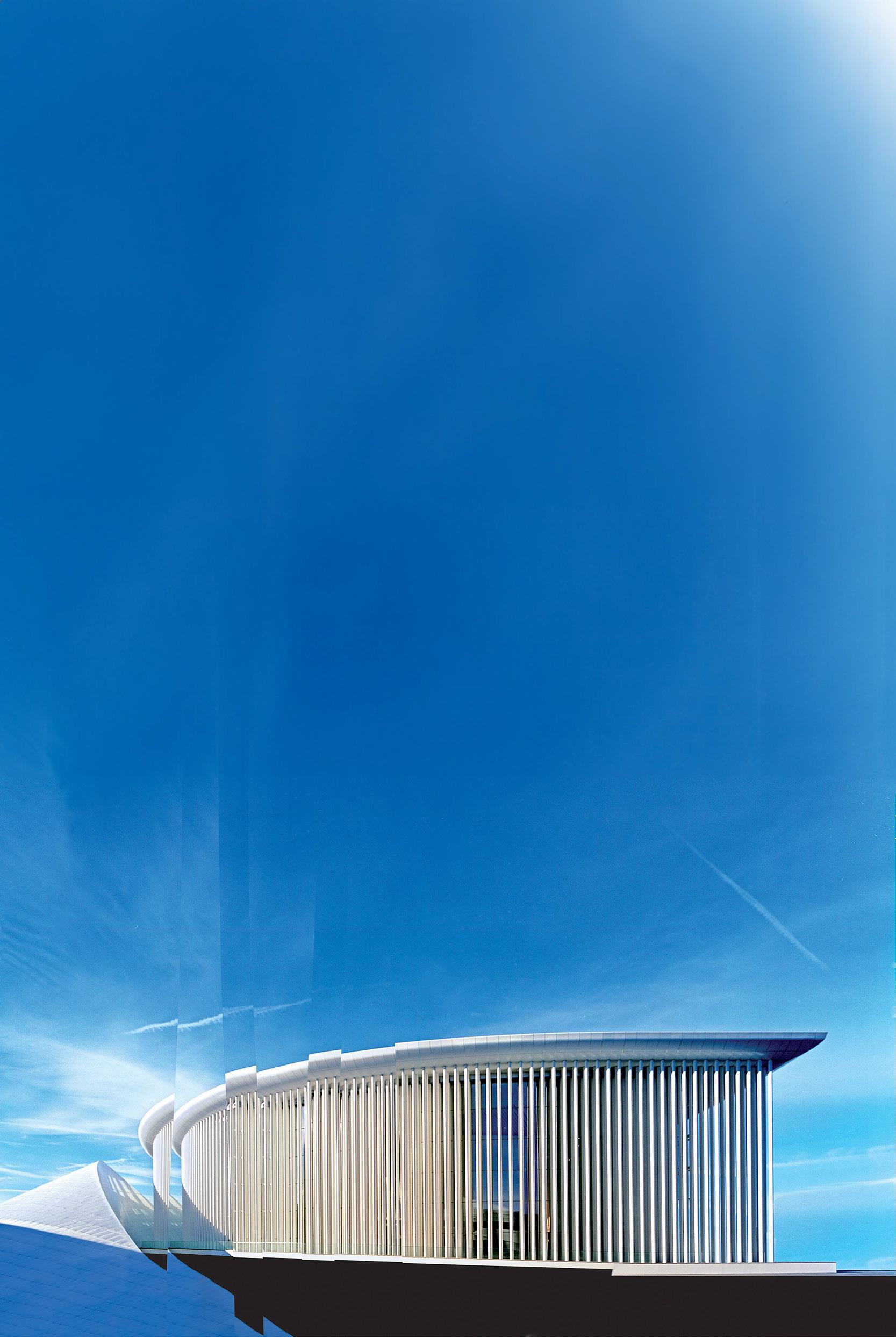
One of Europe’s most vibrant cultural landmarks
From great symphonic concerts to intimate chamber recitals, from jazz, world and film music to children’s workshops, the programme has something for everyone, music lovers of all kinds and all ages, die-hard fans and curious minds alike.
Home to the Luxembourg Philharmonic and host to world-famous artists, the Philharmonie is a place to live unforgettable experiences and share your love for music with fellow concertgoers.
RECOMMENDS
FOR AUDIOVISUAL HERITAGE…
The main mission of the Centre National de l’Audiovisuel (CNA) is to safeguard, develop, and promote Luxembourg’s audiovisual and photographic heritage.
Since 2007, it has opened two exhibition spaces, a cinema (CinéStarlight), and a media library where you can consult and borrow various documents (Médiathèque). The centre has also developed various workshops for every age related to photography, sound, and moving images.
Its main attractions include The Family of Man, a legendary exhibition conceived as a manifesto for peace and the fundamental equality of mankind, expressed through the humanist photography of the post-war years. The Family of Man is part of the Steichen Collections, which assemble works connected to renowned Luxembourgish American photographer, Edward Steichen.
For unique cultural diversity in the world of sounds and images, visit CNA.
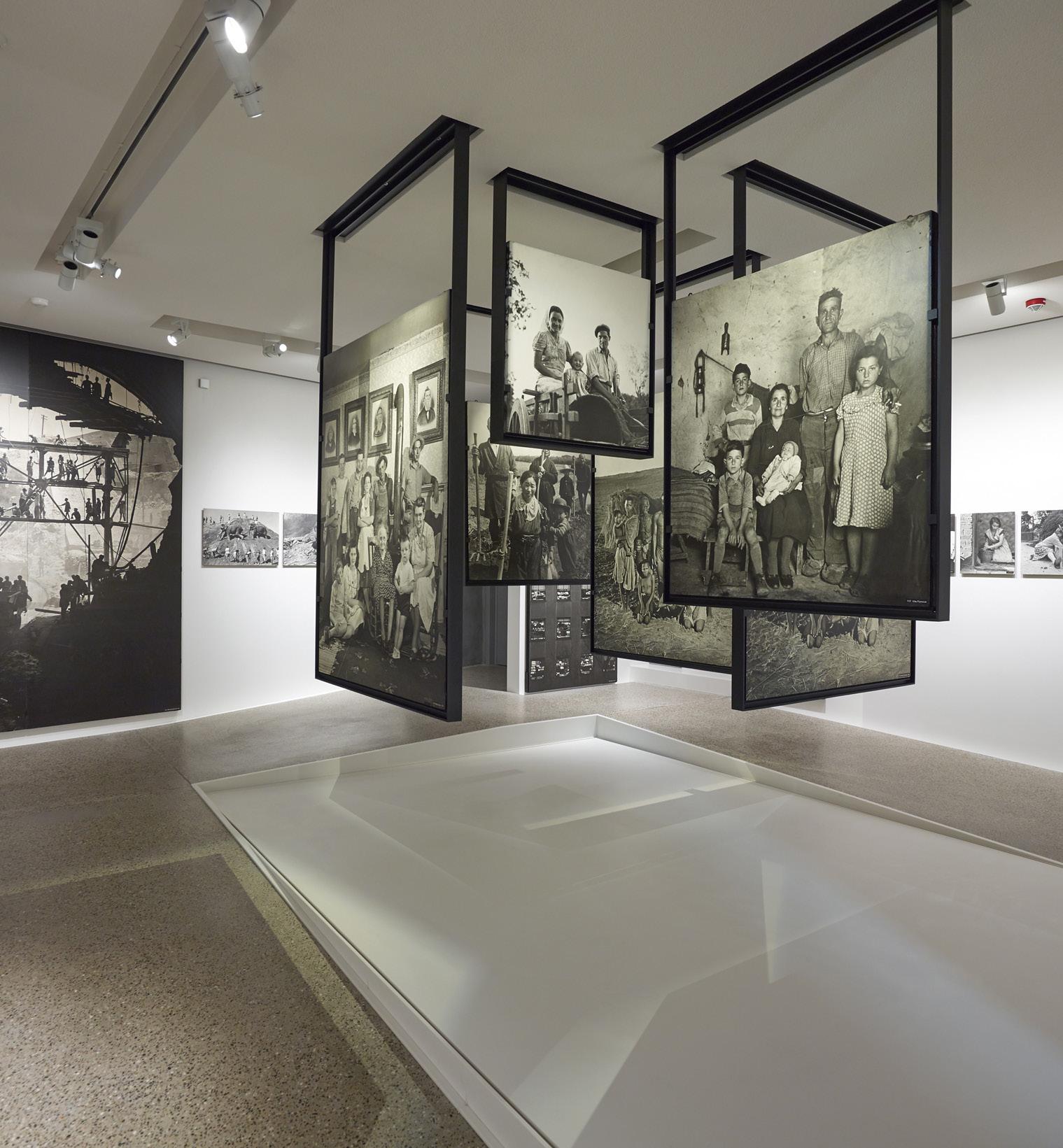

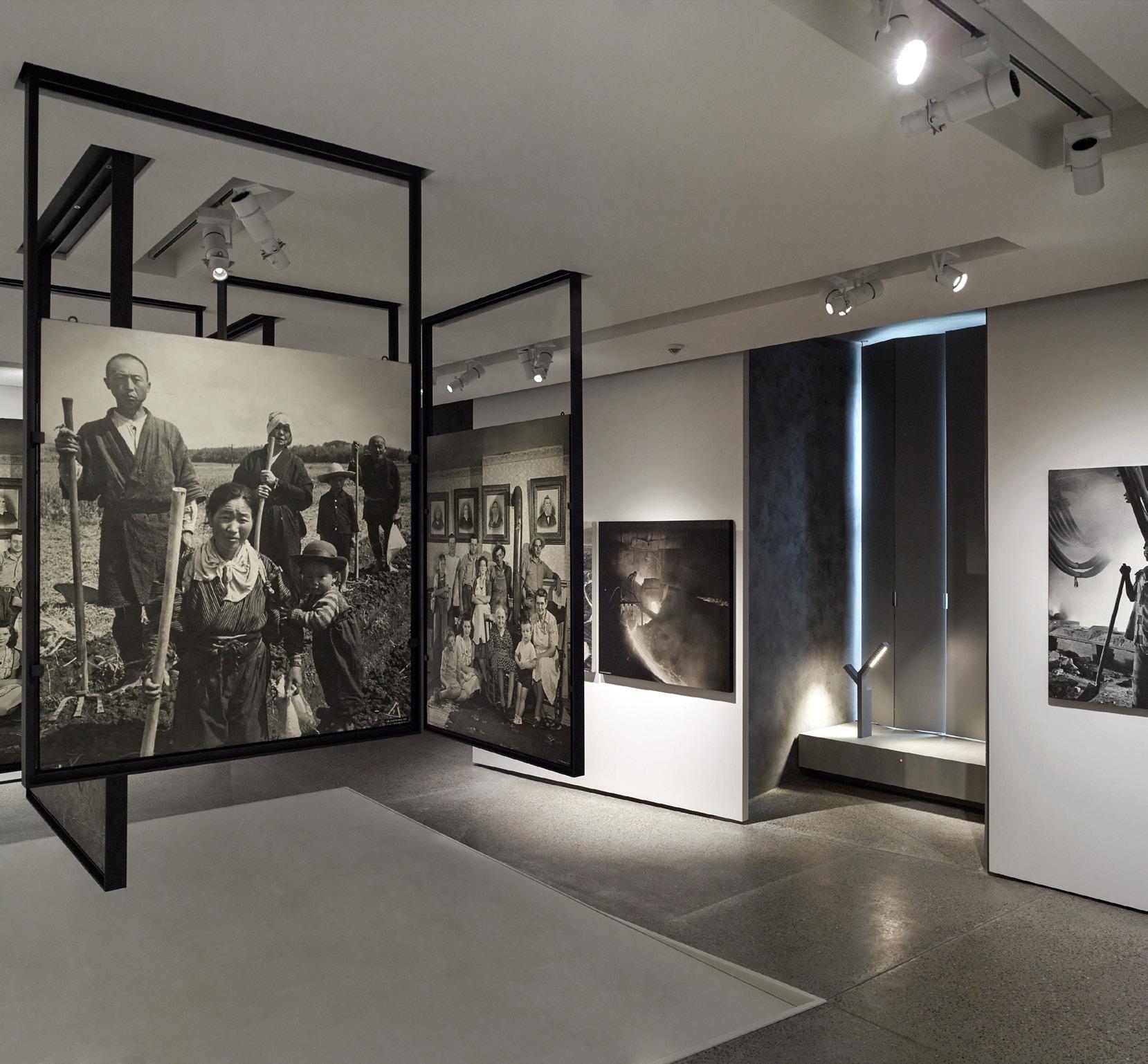
CNA
PHOTOGRAPHY: © CNA
PHOTOGRAPHY:
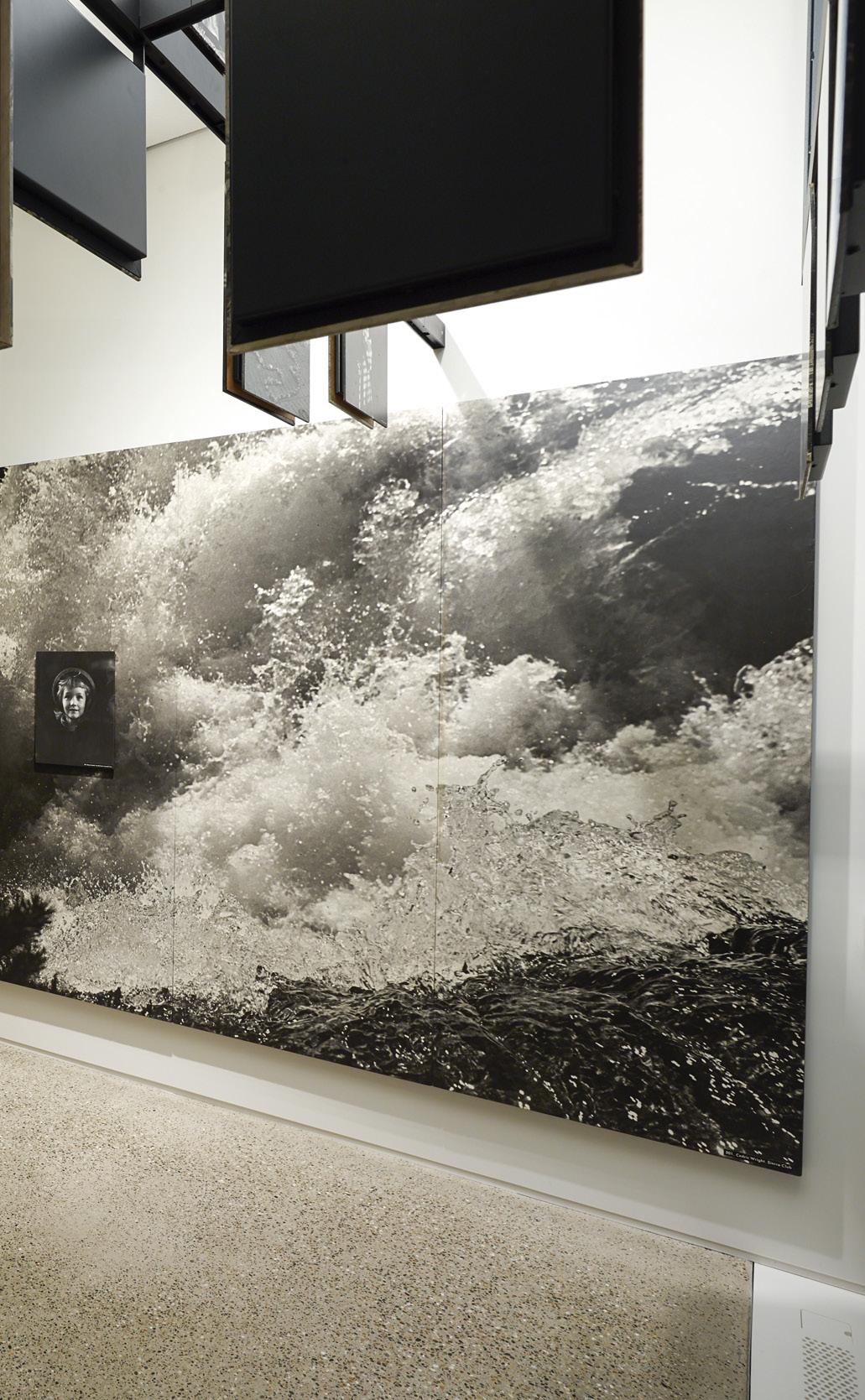
Sleep: FOR A STAY WITH RELAIS & CHÂTEAUX…
Discover Villa Pétrusse , the rebirth of a historic architectural gem in the heart of Luxembourg City.
Nestled within an enchanting park along the banks of the Pétrusse river with views of the Adolphe Bridge, Villa Pétrusse is one of the last remaining bourgeois residences from the late 19th century.
The former Villa Baldauff had been abandoned for years but has been exquisitely preserved and recently opened to the public as a newly restored 5-star hotel in June.
Travel back in time in the refined elegance and old-world charm of a property that exudes the subtle, unostentatious warmth of a well-appointed family home inhabited by discerning art lovers.
There is an array of gastronomic experiences at Villa Pétrusse, which aspires to become a must-visit destination for culinary discovery in the country.
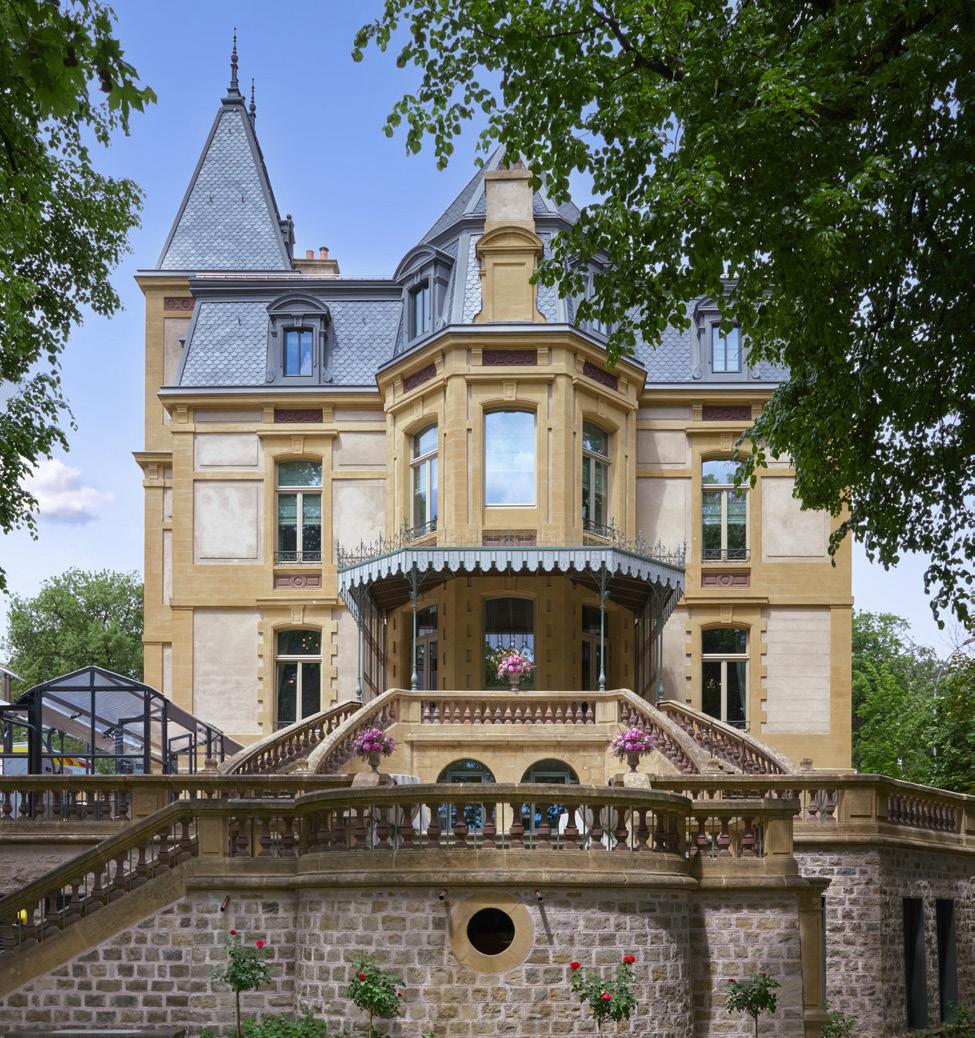

Nearby, the Hôtel Le Place d’Armes also offers a charming stay, ideally situated in the historic heart of Luxembourg.
Past and present are perfectly balanced in this 18th-century building as the hotel’s 30 luxury rooms and suites skilfully blend classic Art Nouveau and contemporary design, respecting the historic character of the site whilst favouring an intimate and warm décor.
The hotel’s gourmet restaurant, La Cristallerie, offers haute couture cuisine that reflects the seasons and is inspired by truly exceptional ingredients.
Both Villa Pétrusse and the Hôtel Le Place d’Armes are Relais & Châteaux properties. Established in 1954, Relais & Châteaux unites an exceptional collection of 580 unique independent luxury hotels and fine dining restaurants throughout the world.
Villa Pétrusse
Hôtel Le Place d’Armes
PHOTOGRAPHY:
PHOTOGRAPHY:
LUXEMBOURG CITY In Focus
Built on the foundations of a formidable fortress, history and culture can be found at every turn in Luxembourg City.
PHOTOGRPAHY: ©VISIT LUXEMBOURG
FROM THE CAPITAL’S Old Town – a UNESCO World Heritage Site – to the Pétrusse and Bock Casemates, there are must-see sights all within walking distance.
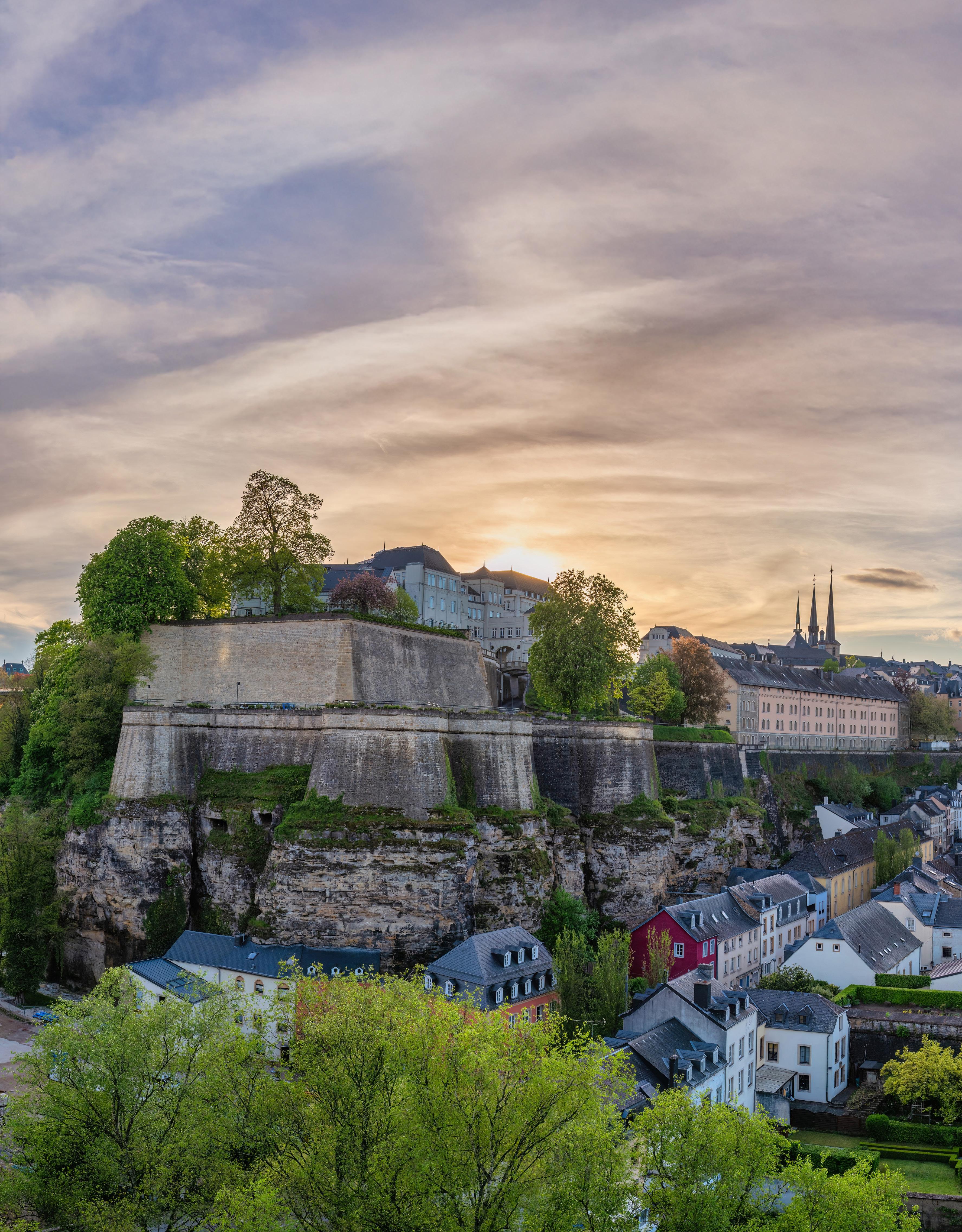
What strikes many visitors is the gorge splitting the city centre in two. The deep green river valleys and towering cliffs that characterise Luxembourg City’s unique topography were the area’s strength when Lucilinburhuc, meaning ‘small castle’, was established in 963 AD.
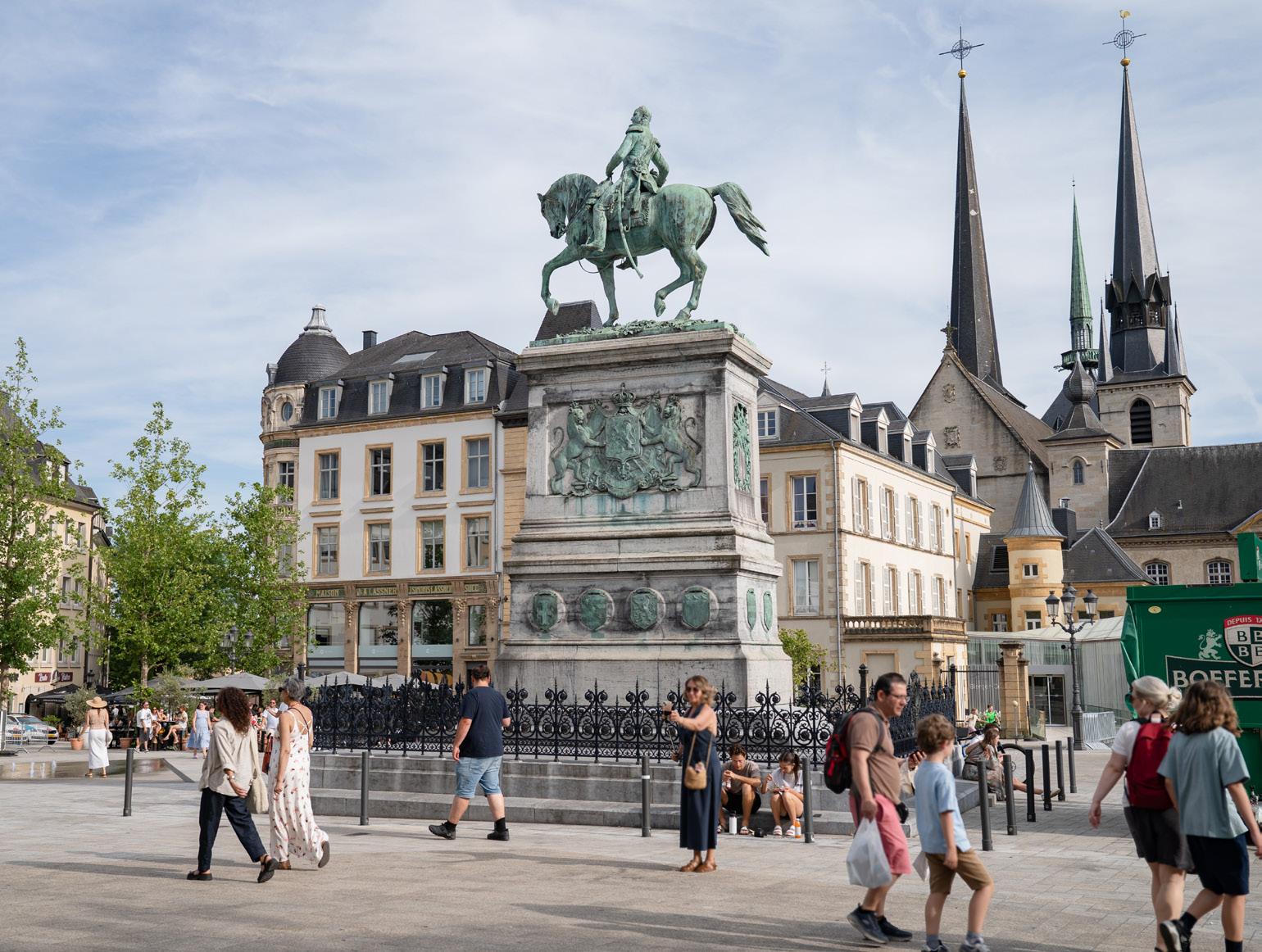
Over the course of its history, Luxembourg City has grown from Lucilinburhuc into the popular capital it is today and forged a new visual identity out of the castle ruins, building architectural gems such as the Adolphe Bridge, Place d’Armes, and Grand Ducal Palace, which is the official residence of the Grand Duke.
The palace is in the Ville Haute neighbourhood of the Old Town and unquestionably has one of the most beautiful façades in the capital.
Today, Luxembourg City continues to evolve architecturally, making it a top tourism destination. With cosy cafés and dining and accommodation for all budgets,

it is the perfect location for a city break or weekend getaway.
An impressive array of annual events, such as the Schueberfouer funfair, Summer in the City, and Winterlights mean there is always something to do in Luxembourg City, no matter what time of year you visit.
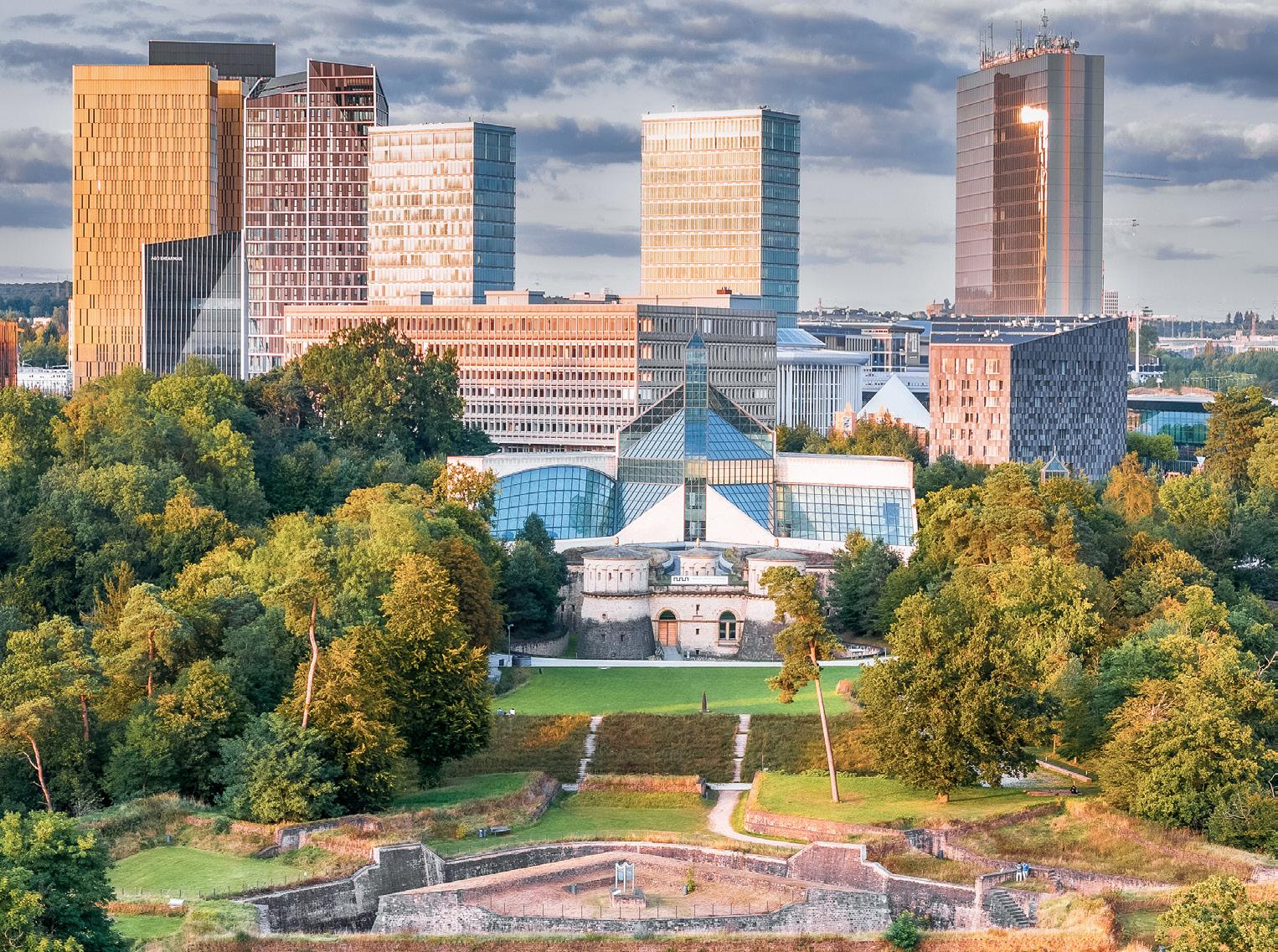
PHOTOGRAPHY: © LOIC LAGARDE
PHOTOGRAPHY:
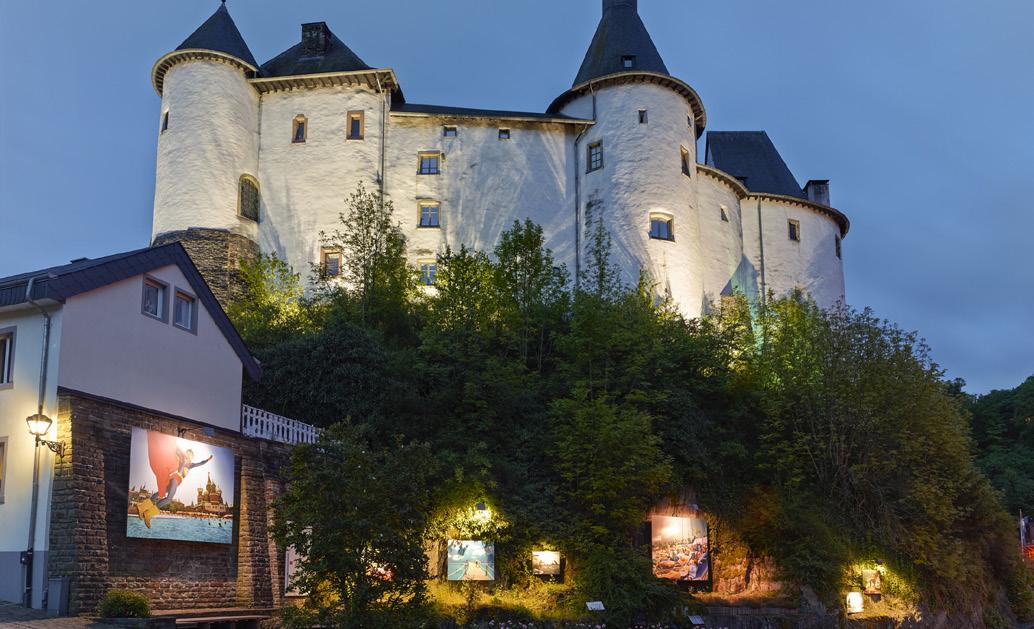



THE FAMILY OF MAN AT CLERVAUX CASTLE

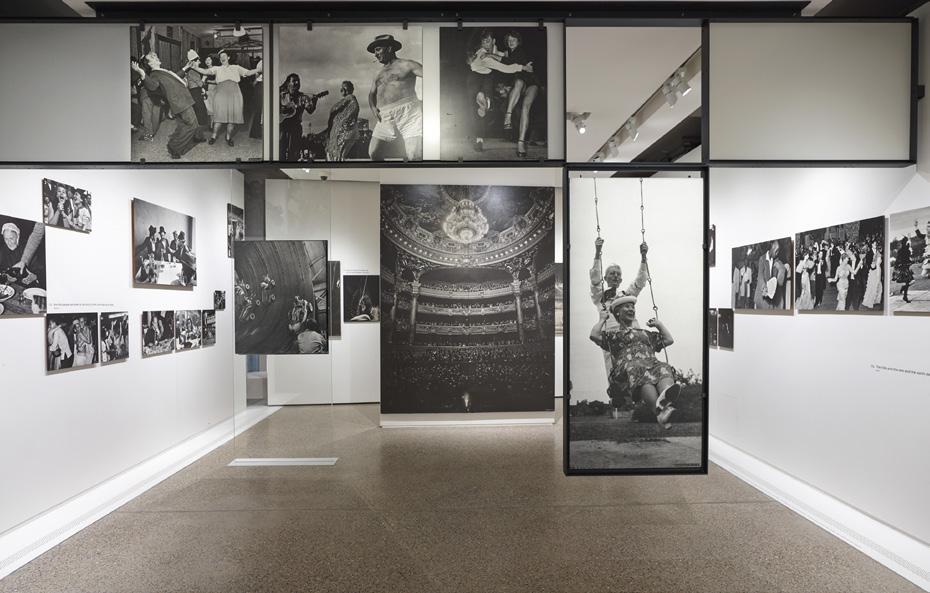
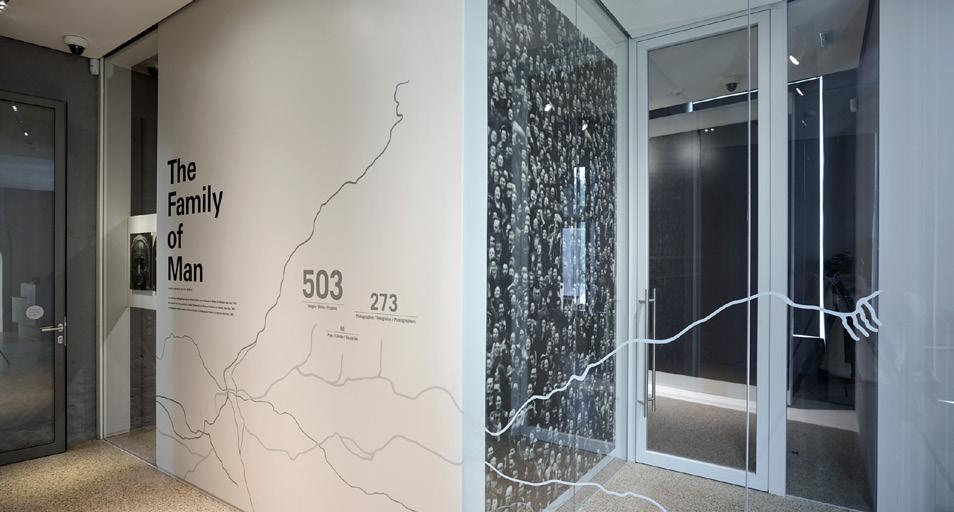
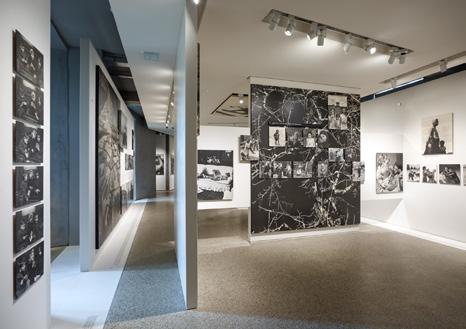
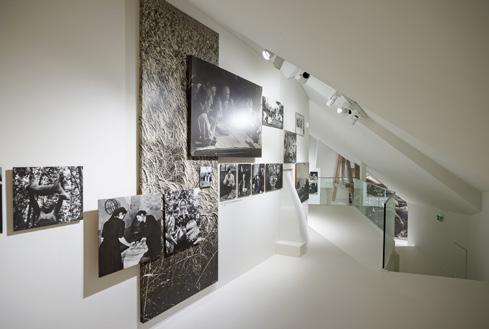




In the heart of the Luxembourg Ardennes, the medieval Clervaux castle houses one of the most renowned and widely circulated exhibitions in the history of photography: The Family of Man. Conceived by Luxembourg-born photographer and curator Edward Steichen (1879–1973), the exhibition was first shown in 1955 at the Museum of Modern Art in New York. Since 1994, the integral version of the exhibition has been permanently installed in Clervaux, transforming the town into a locus of international cultural pilgrimage for scholars, practitioners, and enthusiasts of photography.
Comprising 503 photographs by 273 photographers from 68 countries, the exhibition was articulated as a collective portrait of humanity. Its thematic progression— love, marriage, birth, family, labor, conflict, reconciliation, and faith—invites visitors to apprehend the universality of human experience across cultural, social, and geopolitical divides. Emerging in the immediate aftermath of the Second World War and in the context of Cold War tensions, Steichen’s project functioned not merely as an exhibition but as a humanist manifesto, a visual argument for dignity, tolerance, and the safeguarding of human rights.
What makes The Family of Man exceptional is not only its message but also its presentation. At a time when photographs were usually displayed as individual framed works, Steichen broke with convention. He enlarged images to monumental scale, hung them in clusters, suspended them from the ceiling, and arranged them to create dialogues and contrasts. The result is an immersive journey that feels closer to cinema or literature than to a traditional museum display. Each image gains strength in relation to the others, and together they weave a universal story of life.
The exhibition is structured like a narrative, with a prologue, two central sections, and an epilogue, encouraging visitors to follow a circular path. This sense of continuity reinforces its universal
ambition: to show that despite cultural, social, or political differences, humanity shares common hopes, struggles, and emotions. Even today, the staging retains its freshness, offering a moving experience to all who walk through its spaces.
Following its premiere in New York, The Family of Man toured extensively, reaching audiences across multiple continents and ultimately attracting millions of visitors. Its resonance was such that in 2003 UNESCO inscribed the exhibition in its Memory of the World register, acknowledging its exceptional status as both a cultural artefact and a historical document.
To visit The Family of Man in Clervaux is therefore not only to encounter a canonical chapter in the history of photography, but also to engage with Steichen’s conviction that images could serve as agents of connection and empathy. Set within the walls of Clervaux Castle, the exhibition resonates even more strongly, contrasting the medieval architecture with a message that remains strikingly contemporary. Today, the exhibition stands as both a monument and a living work—at once a testimony to mid-twentiethcentury aspirations for peace and a continuing invitation to reflect critically on the shared conditions of human existence across time, space, and borders.
Château de Clervaux, L-9701 Clervaux, Luxembourg T +352 92 96 57 | E fom@cna.etat.lu W www.steichencollections-cna.lu
From Wednesday to Sunday, 12pm to 6pm Guided tours are available on request Closed on Mondays and Tuesdays, except public holidays



Landmark Attractions
Grand Ducal Palace
For over a century, the Grand Ducal Palace has been the official residence of the Grand Duke and the place where he carries out his duties. Located at the heart of the capital, it embodies the closeness between the grand ducal family of Luxembourg and the country’s population.

Bock Casemates
The Bock Casemates, a subterranean defence system made up of a series of tunnels, is one of the most important visitor sites in Luxembourg. Visiting the archaeological crypt, the antechamber to the casemates, is a similarly remarkable experience. On account of these impressive fortifications, Luxembourg was given the epithet of ‘Gibraltar of the North’.
Place d’Armes
Also named ‘Parlour of the City’, Place d’Armes is a square in Luxembourg City that originally served as a parade ground for troops defending the capital. Today, it is part of the pedestrian zone and surrounded by numerous cafés and restaurants, becoming the city’s main centre of activity and attracting both locals and visitors of all ages.

Getting There and Around
THANKS TO ITS central location in Europe, Luxembourg is very easy to reach by air, with its national airline Luxair offering direct flights from major European cities.
Once you have landed at Luxembourg Airport (LUX), the city centre is only 6km away. All public transport is free, with the exception of first-class, making it convenient and affordable to get from the airport by scheduled tram or bus routes. Luxembourg City is only a 20-minute ride from LUX. It is the world’s first country to offer free nationwide public transport and the scheme applies to residents, cross-border commuters, and tourists alike, so make the most of it!
Alternatively, you will find plenty of taxis at the front of the terminal ready to escort you to your destination. Operators can charge their own tariffs, however, as there are no legally regulated fares, so booking online or over the phone is advised to find out the cost in advance – this can sometimes depend on other factors such as the size of the vehicle, for example.
If travelling to Luxembourg by train from neighbouring Germany, France, or Belgium, there are also attractive rail links available from across the border.
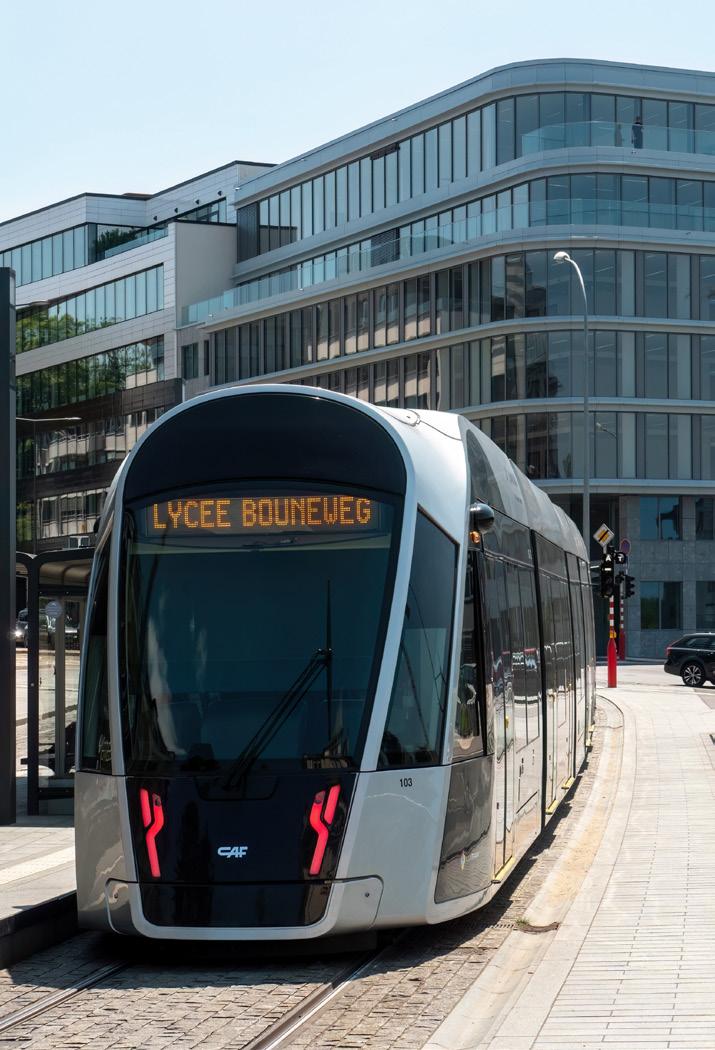
Car rentals are another option for getting around Luxembourg with plenty of providers available, whilst there are also several bike rental points throughout the country. Whether you’re planning a leisurely ride through the picturesque countryside or an adventurous exploration of the vibrant city streets, cycling is the perfect way to discover the different facets of Luxembourg.

For exploring on foot, the capital is compact and very walkable, spanning just under 52 sqkm.
DID YOU KNOW?
• Luxembourg is the world’s only remaining sovereign grand duchy, with the Grand Duke as its head of state.
• On 3rd October 2025, after reigning for 25 years, Grand Duke Henri is abdicating, with his eldest son becoming Grand Duke Guillaume.
• The country is trilingual, with Luxembourgish, German, and French as the three official languages.
• Its motto – ‘Mir wëlle bleiwe wat mir sinn’ – means ‘We want to remain what we are’ in Luxembourgish.
• The capital is Luxembourg City, whose Old Town and fortifications have been a UNESCO World Heritage Site since 1994.
• After Malta, Luxembourg is the second-smallest EU member state.
• ‘Judd mat gaardebounen’ – smoked pork with broad beans in a creamy sauce – is Luxembourg’s national dish.
• It is the joint second-most successful country in the Eurovision Song Contest, winning the competition a total of five times. Luxembourg returned to the contest in 2022 after a 31-year absence.
• All modes of public transport have been completely free in the country since 2020, except for first-class travel.
• The Schengen Agreement was signed in Schengen, a village in the Moselle region of Luxembourg, in 1985. It led to the creation of the Schengen Area, a system of open borders encompassing 29 European countries. The M.S. Princesse Marie-Astrid, the original boat on which it was signed, returned to Schengen in June 2025 for the occasion of the agreement’s 40th anniversary. It is now part of the European Museum Schengen.

